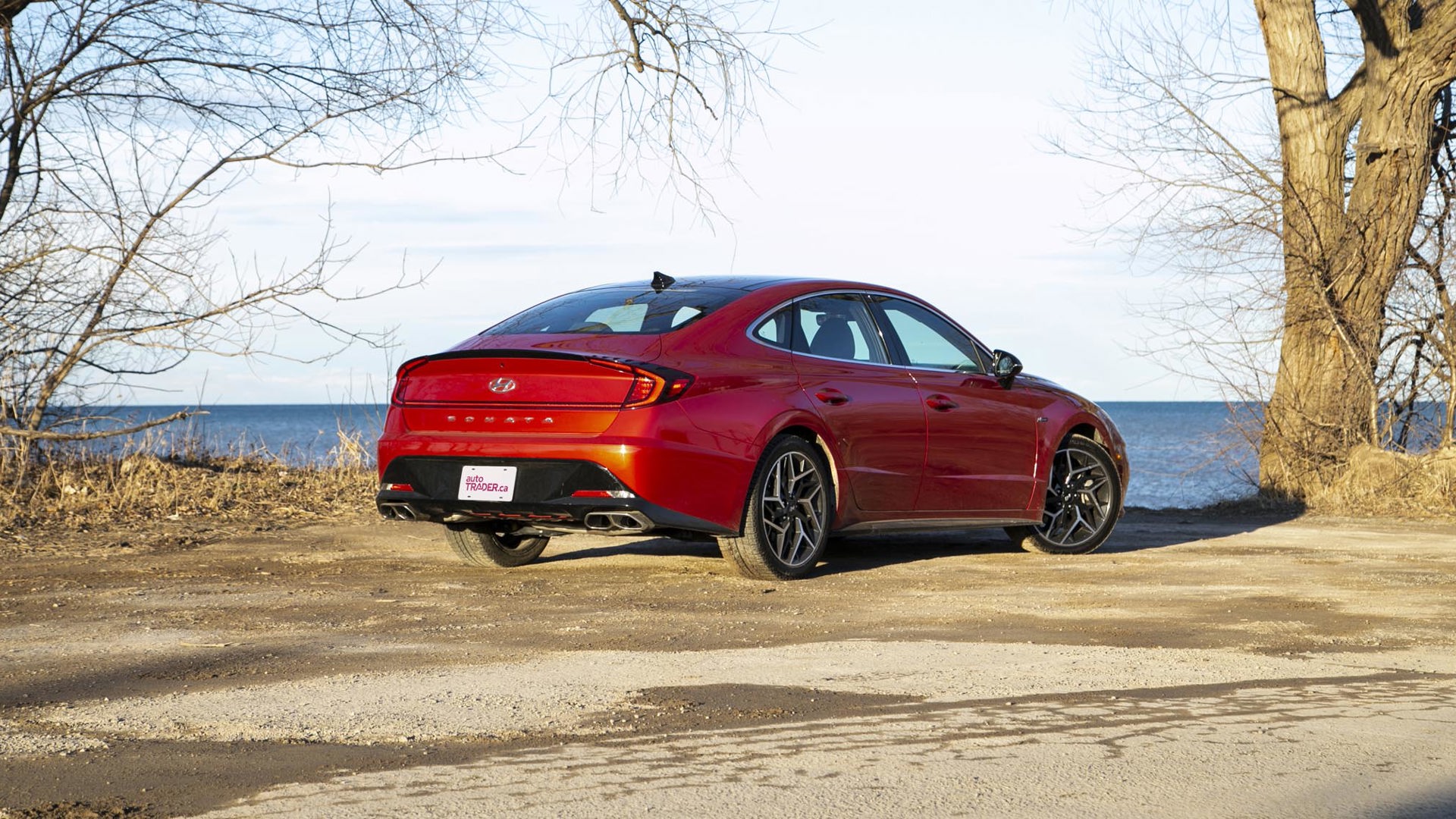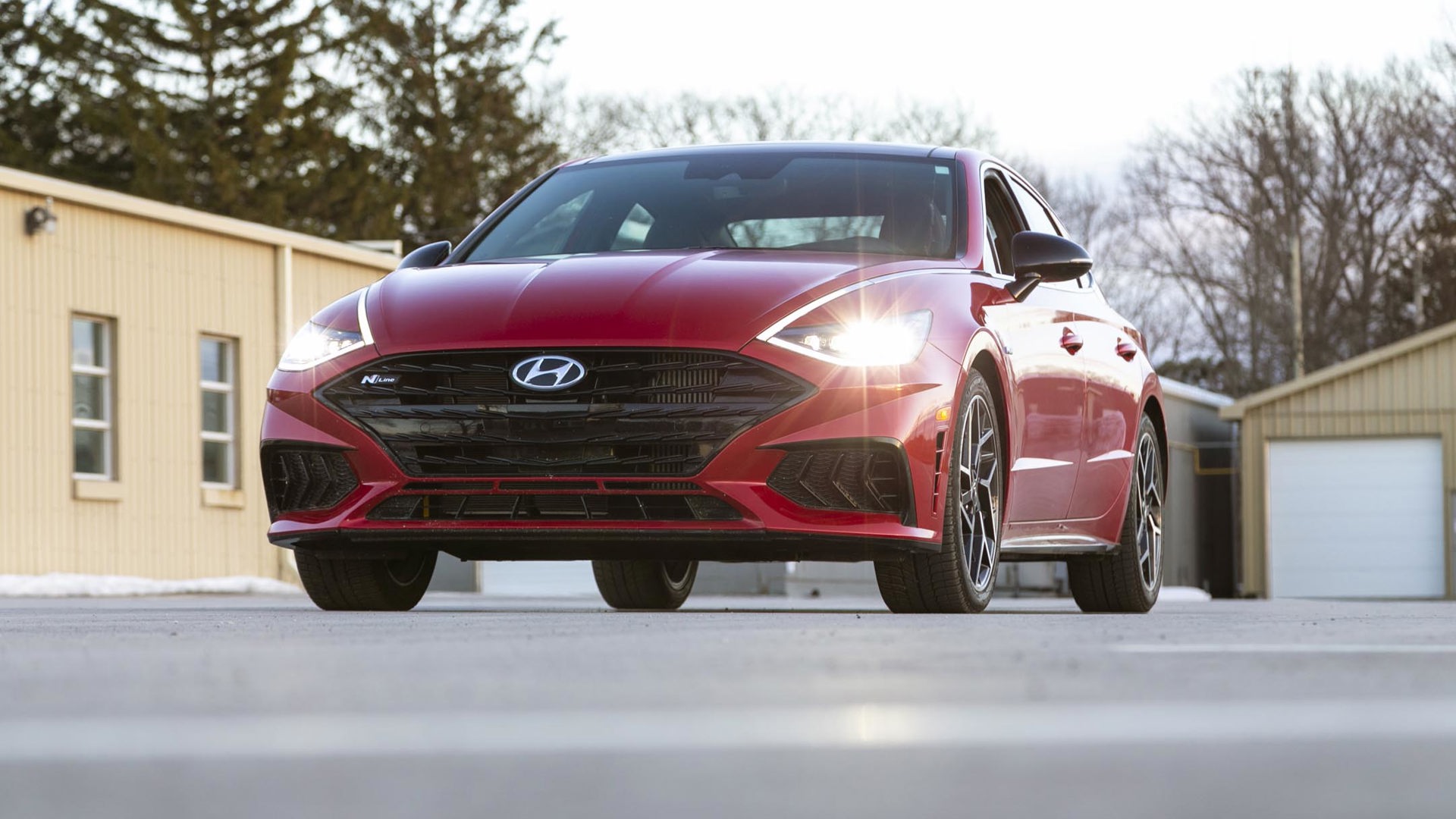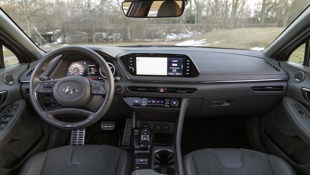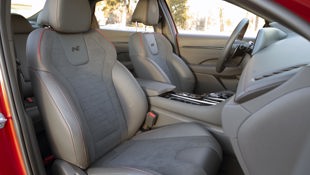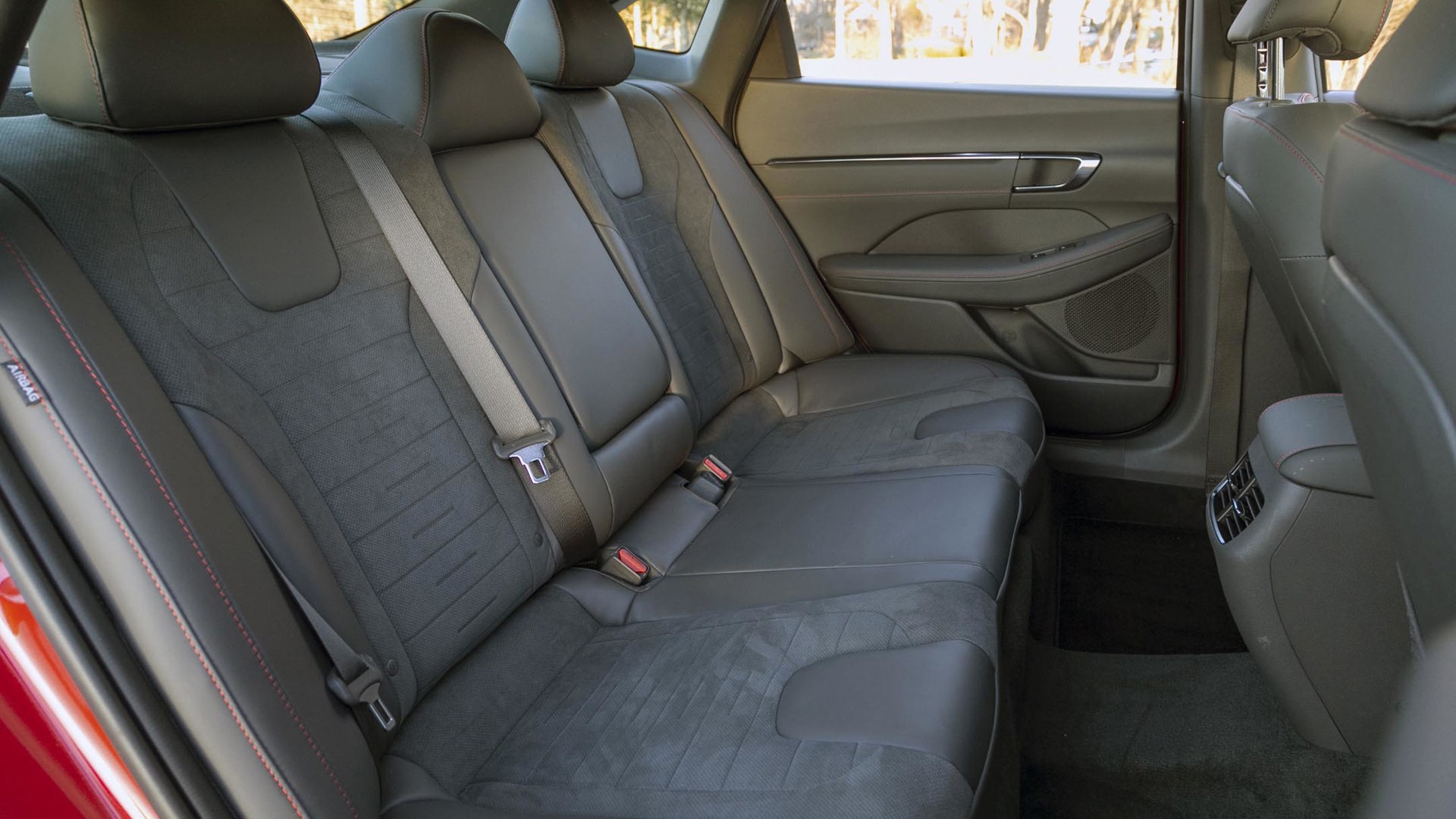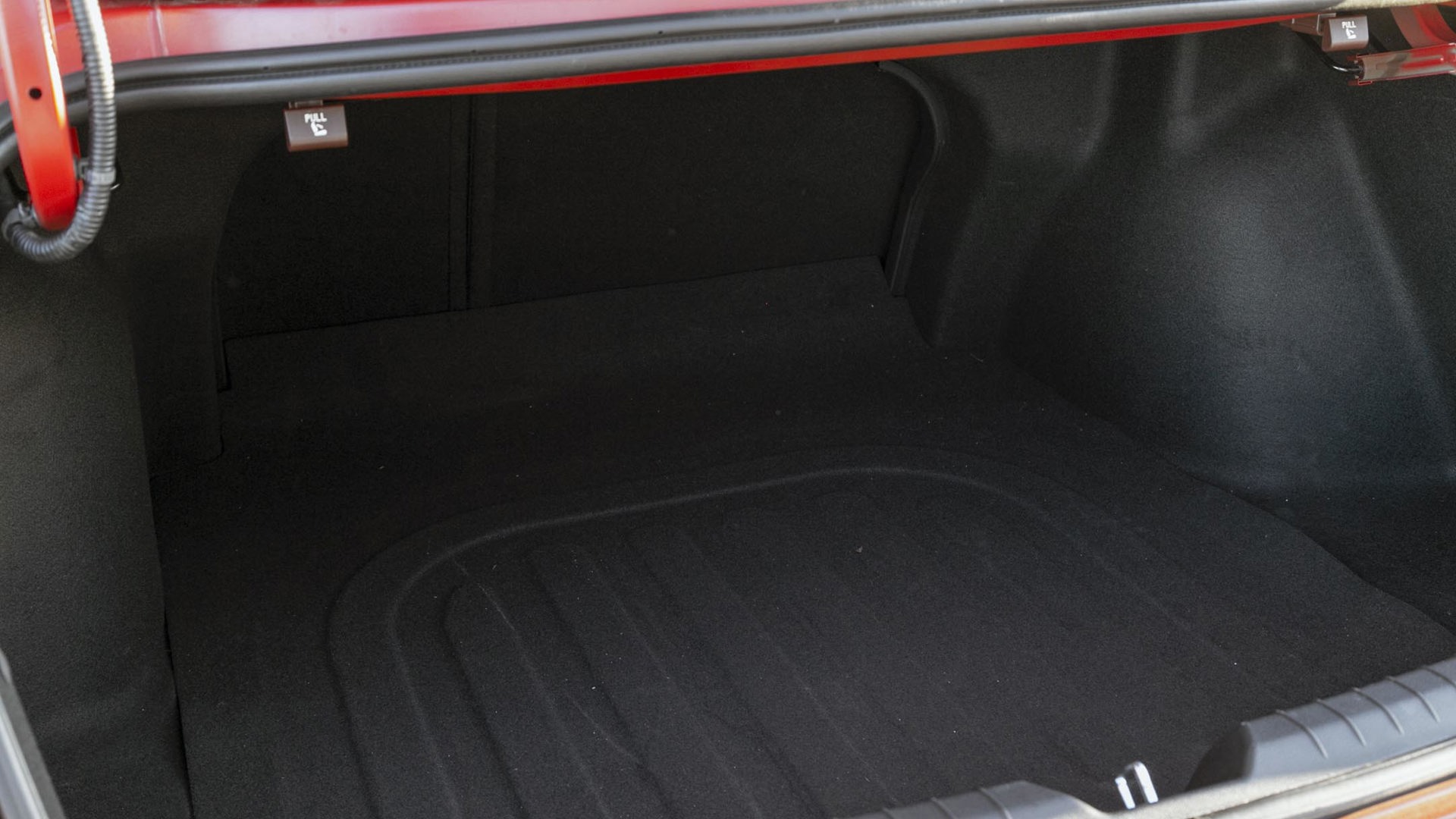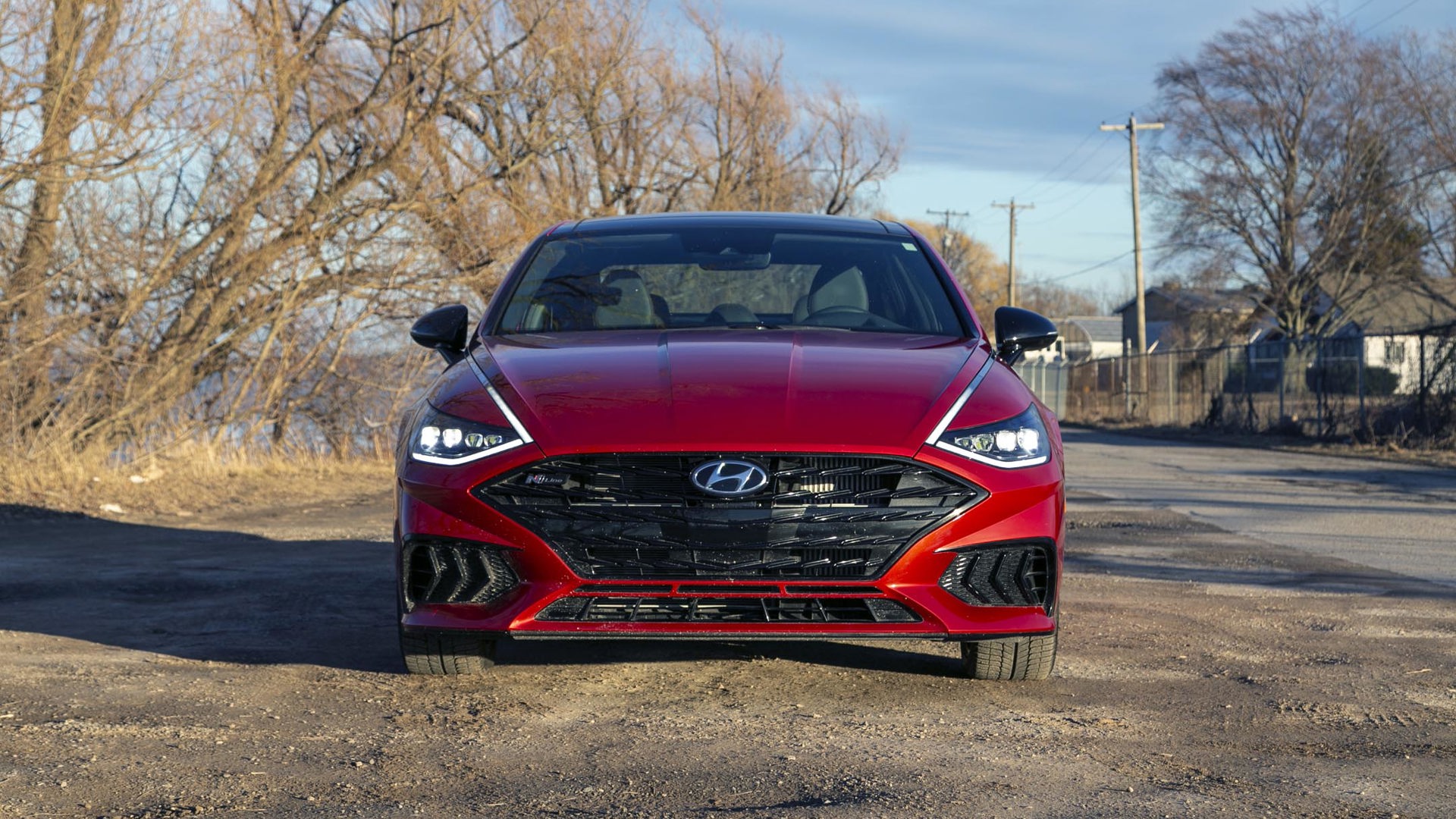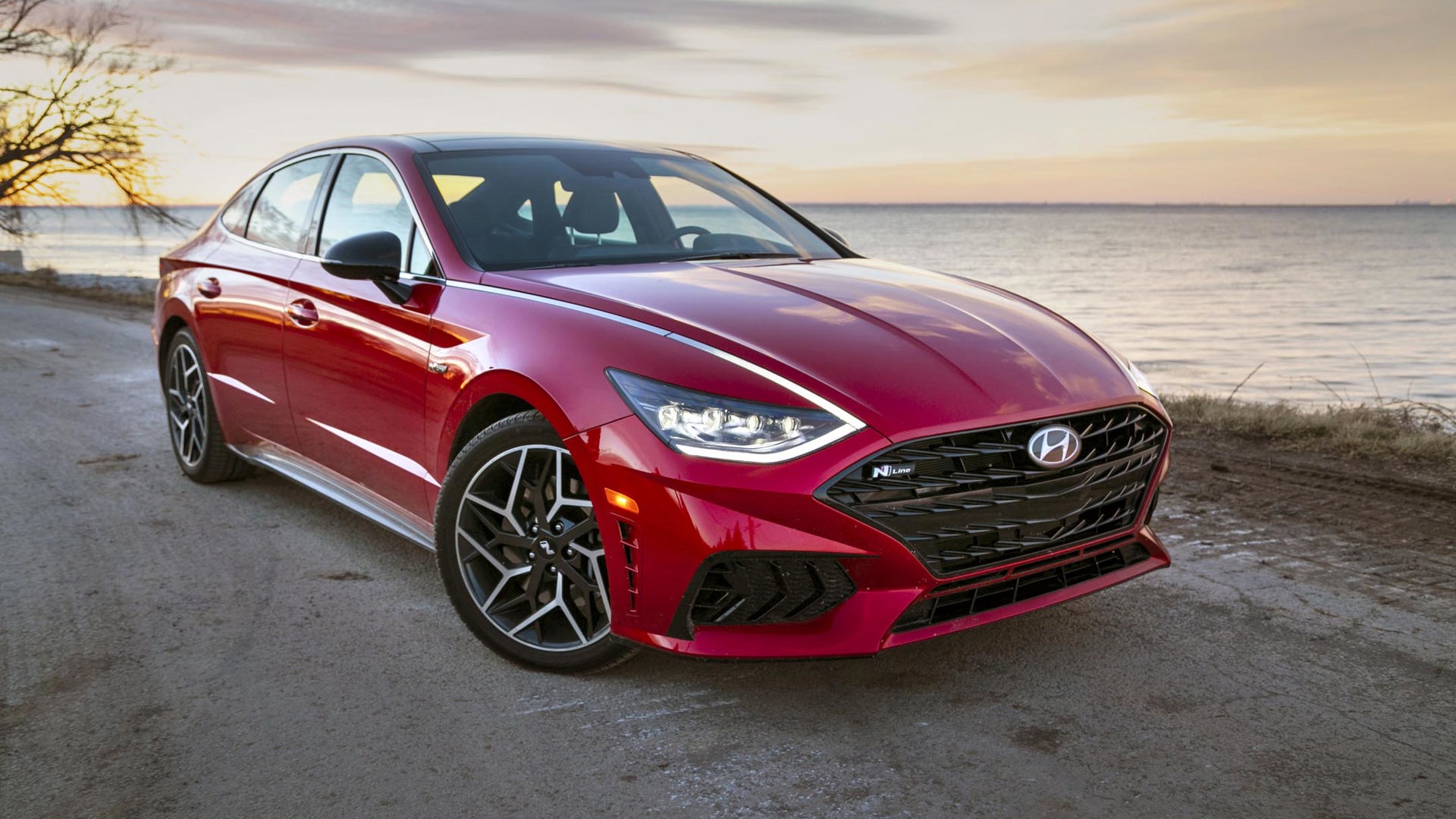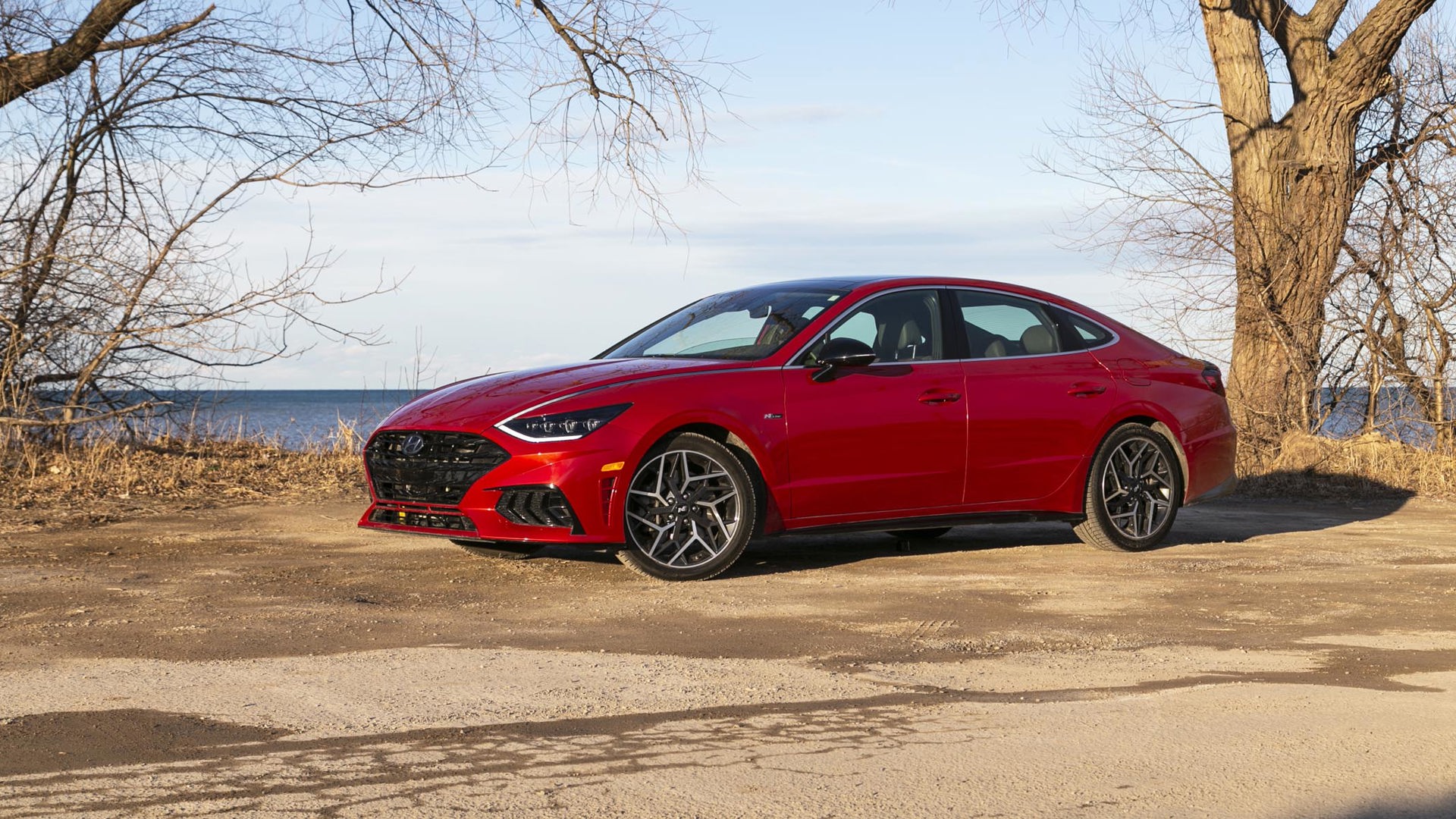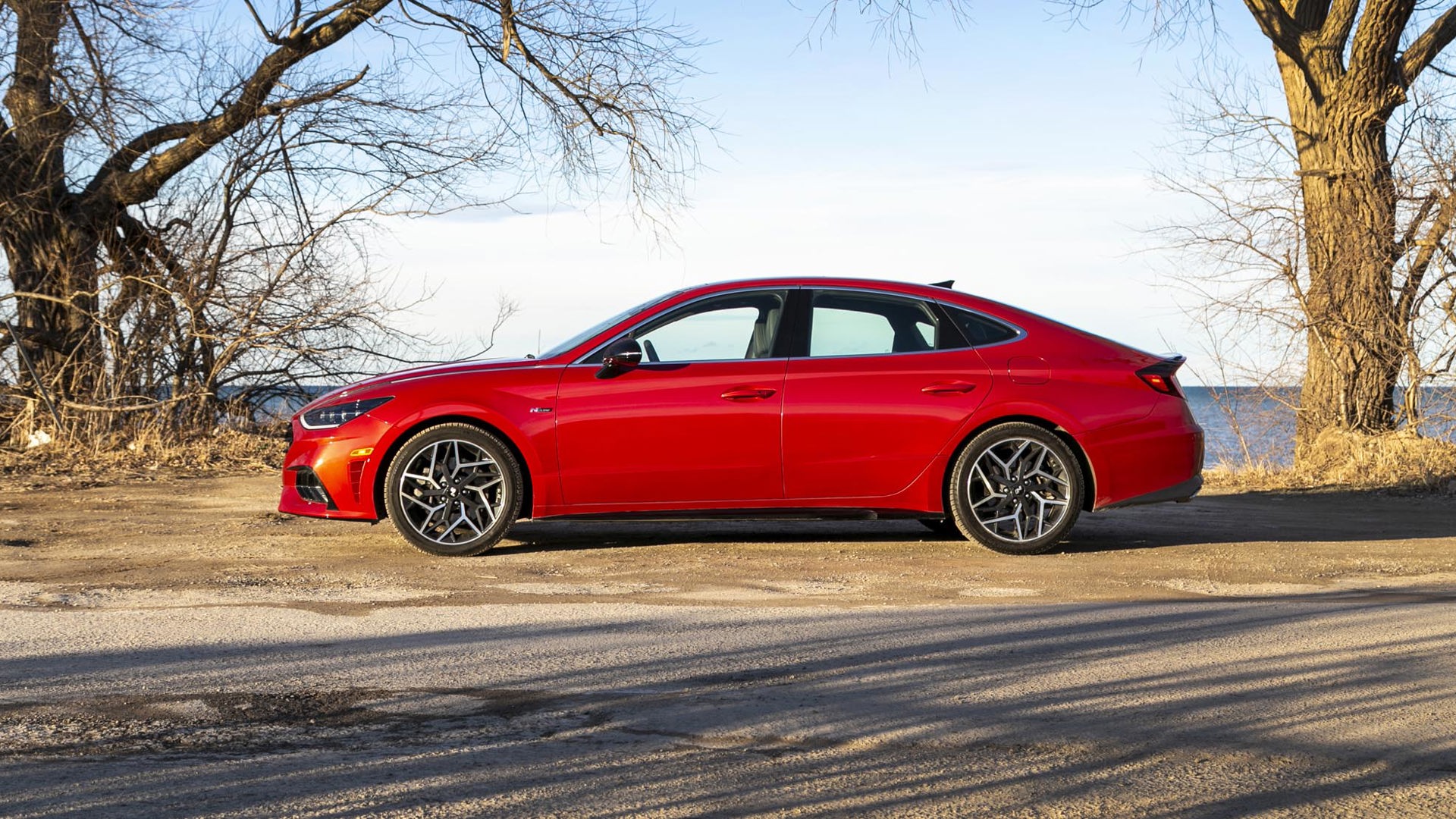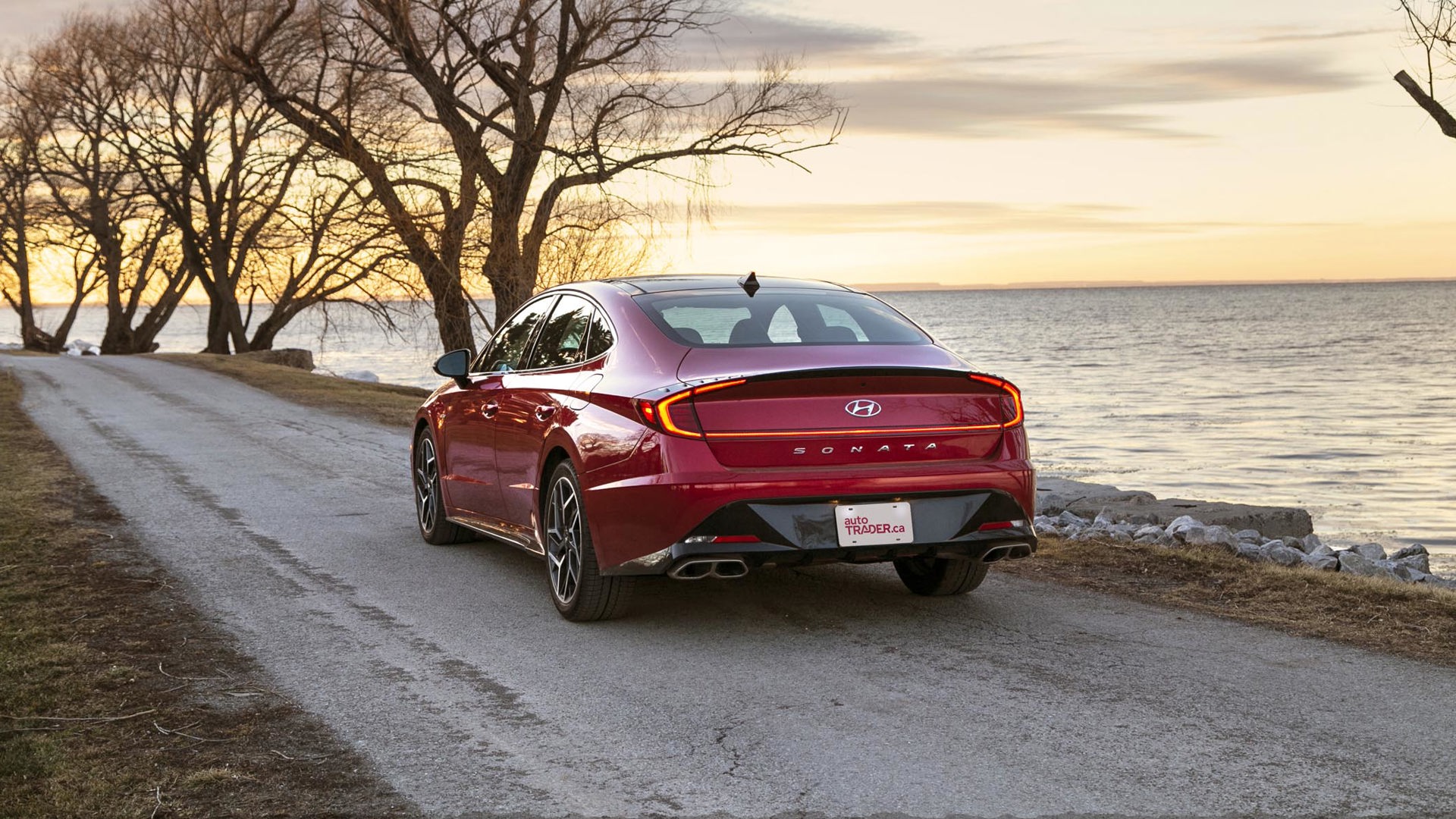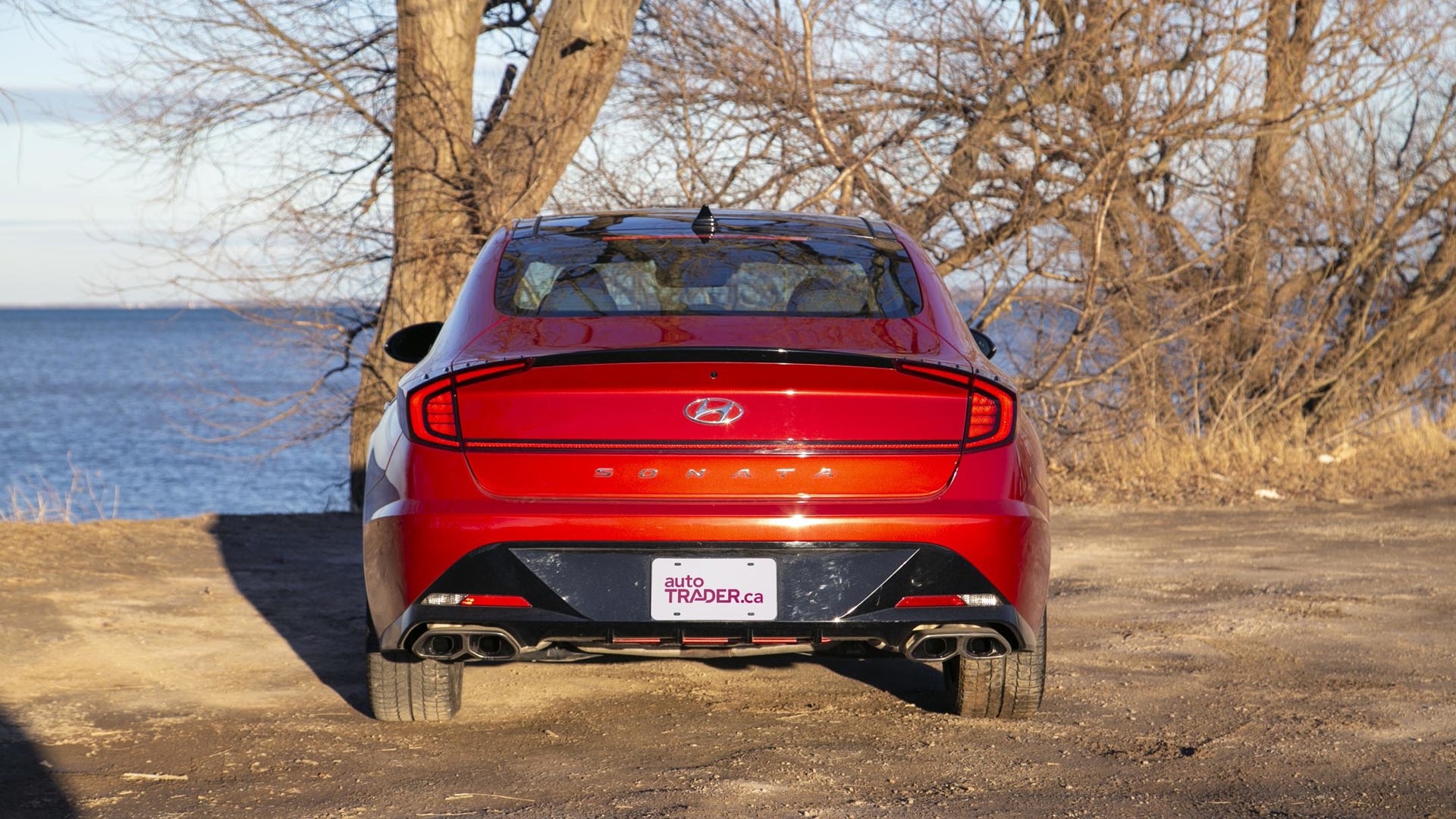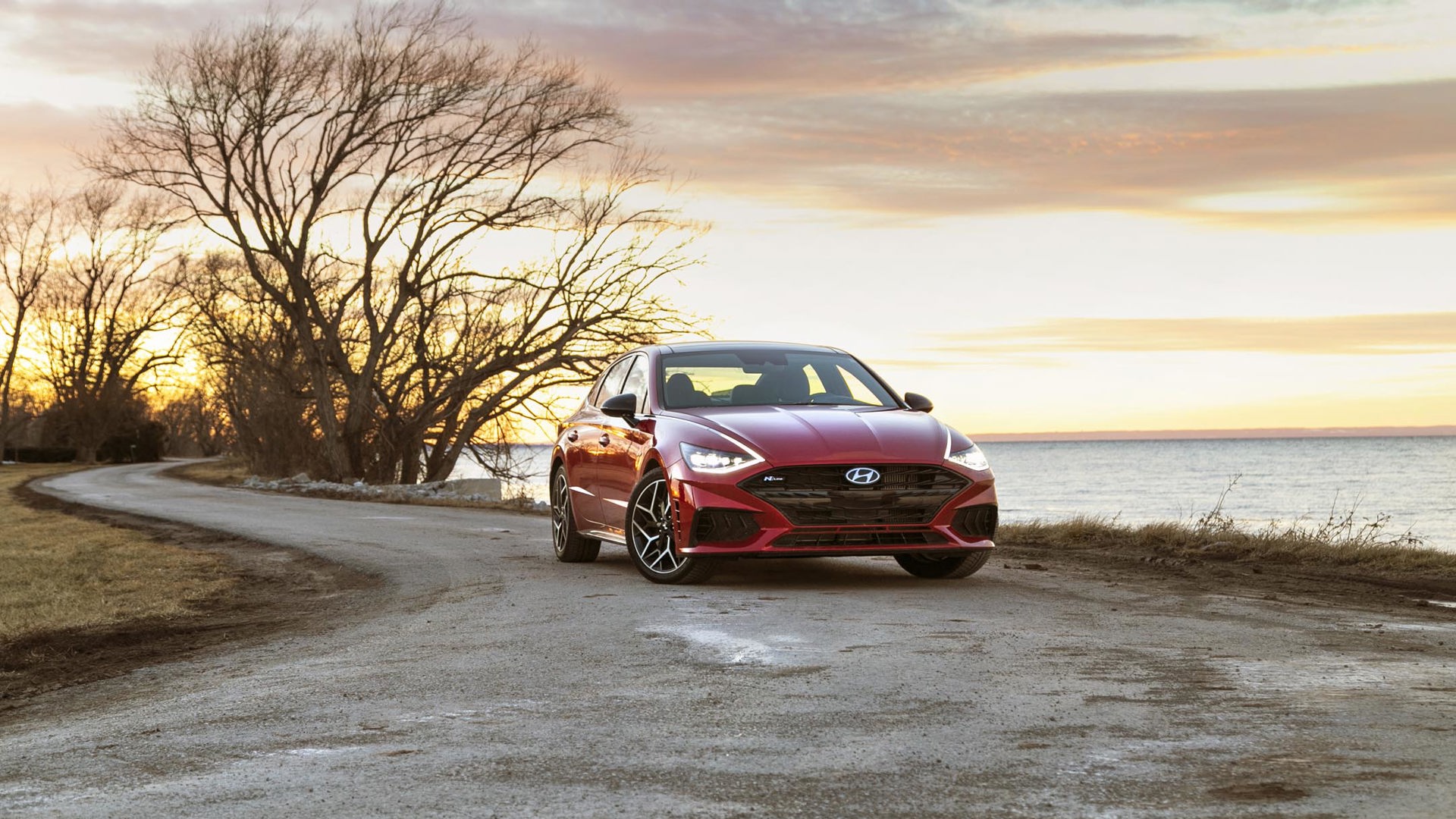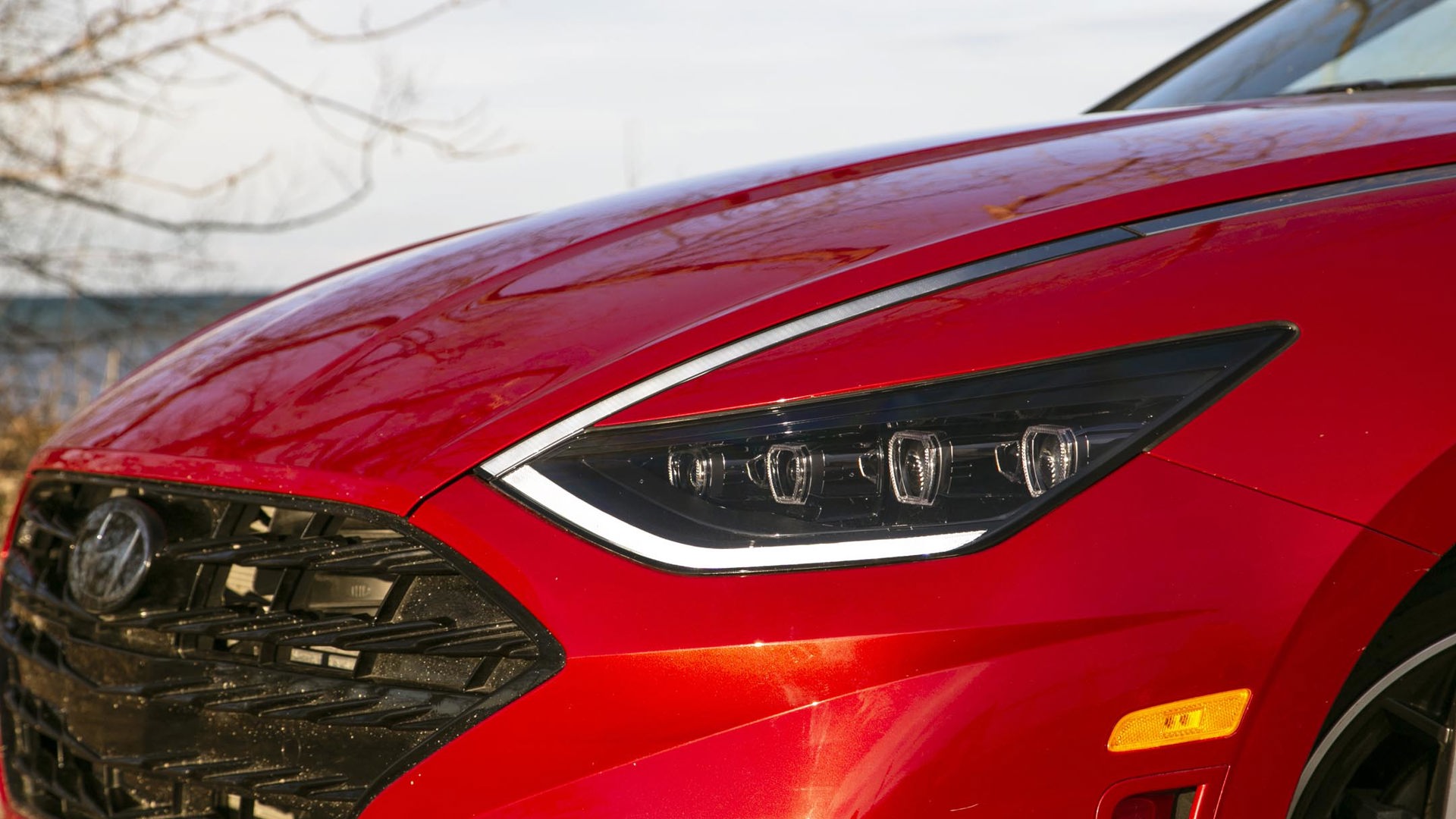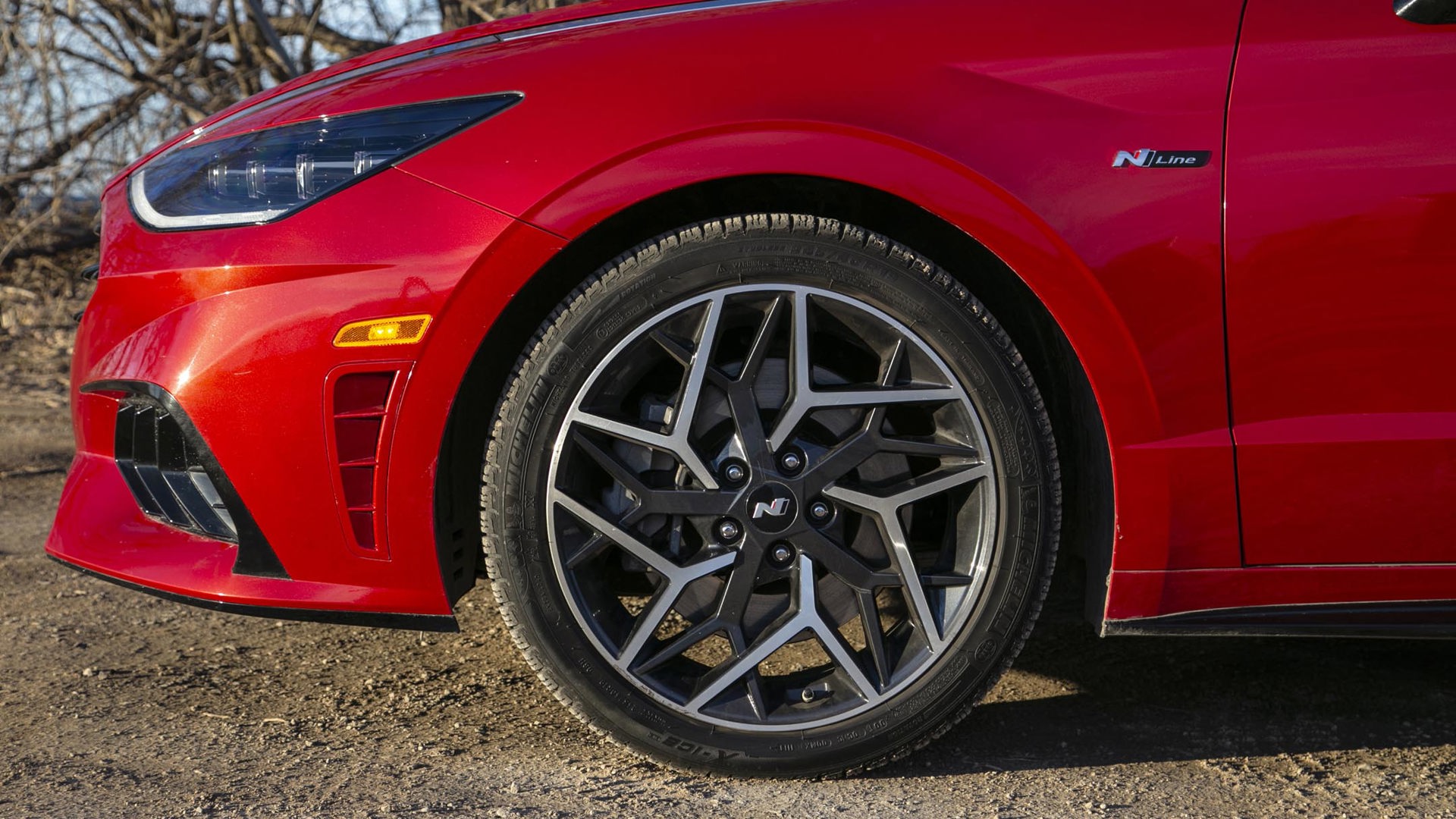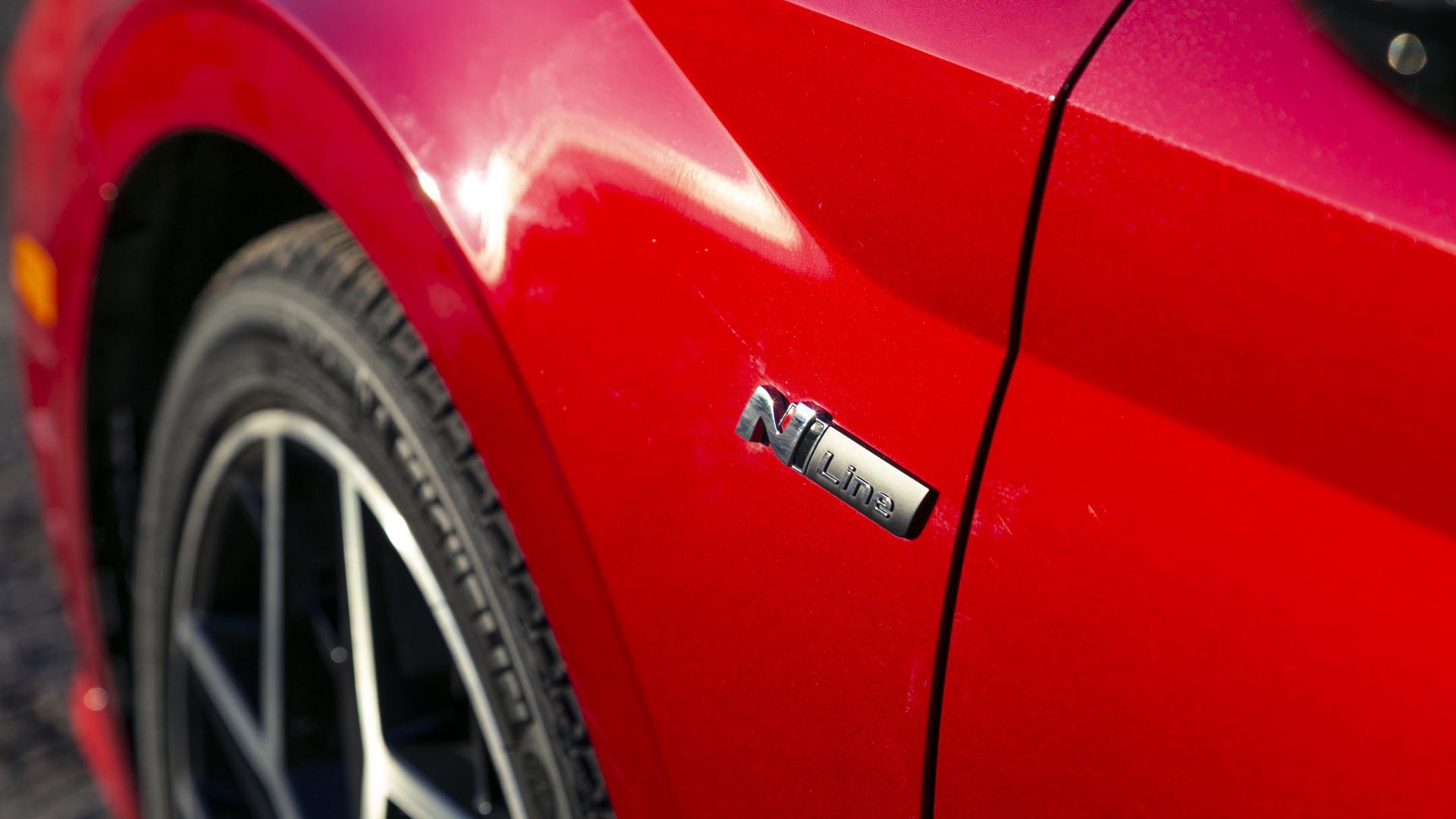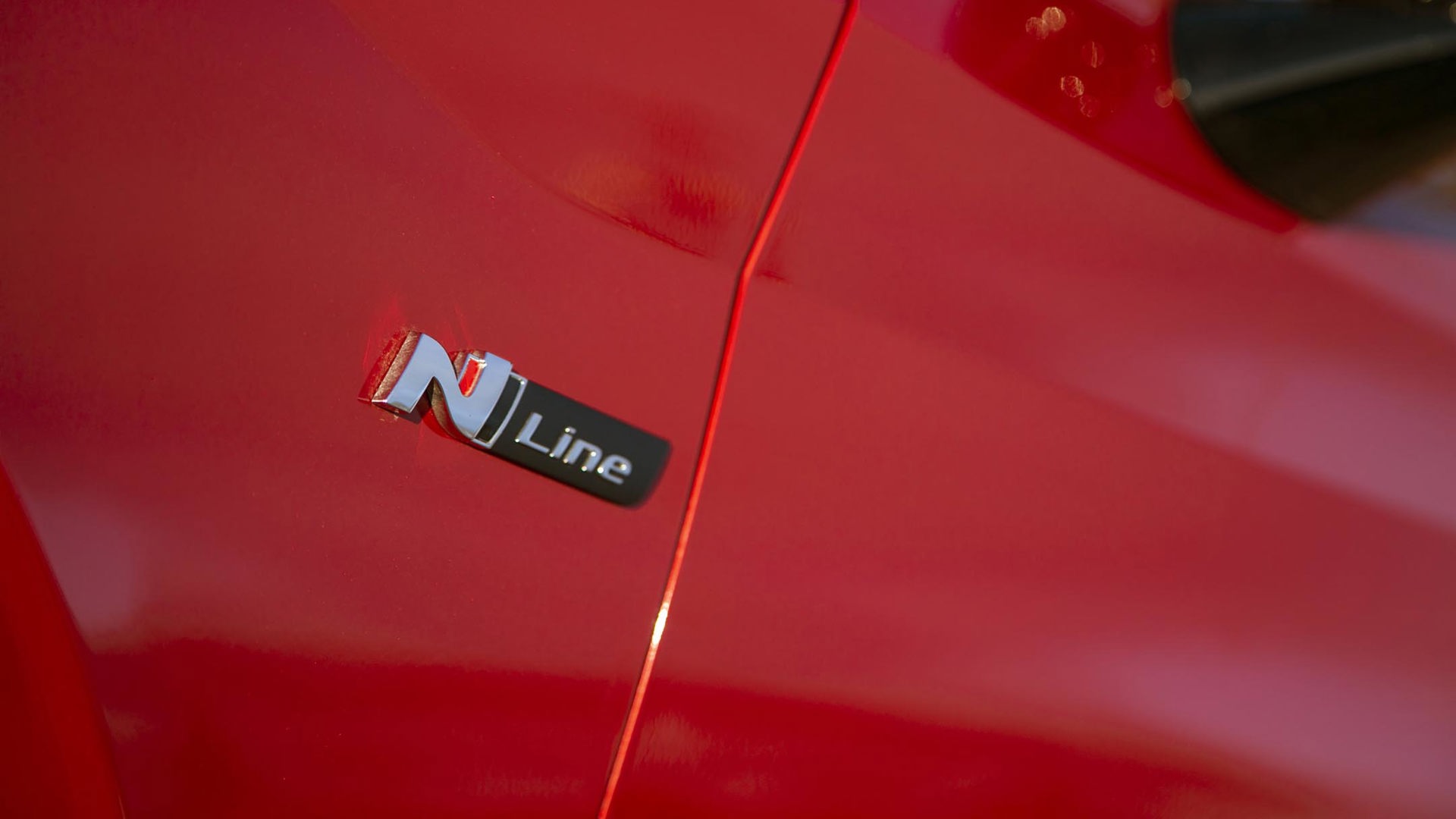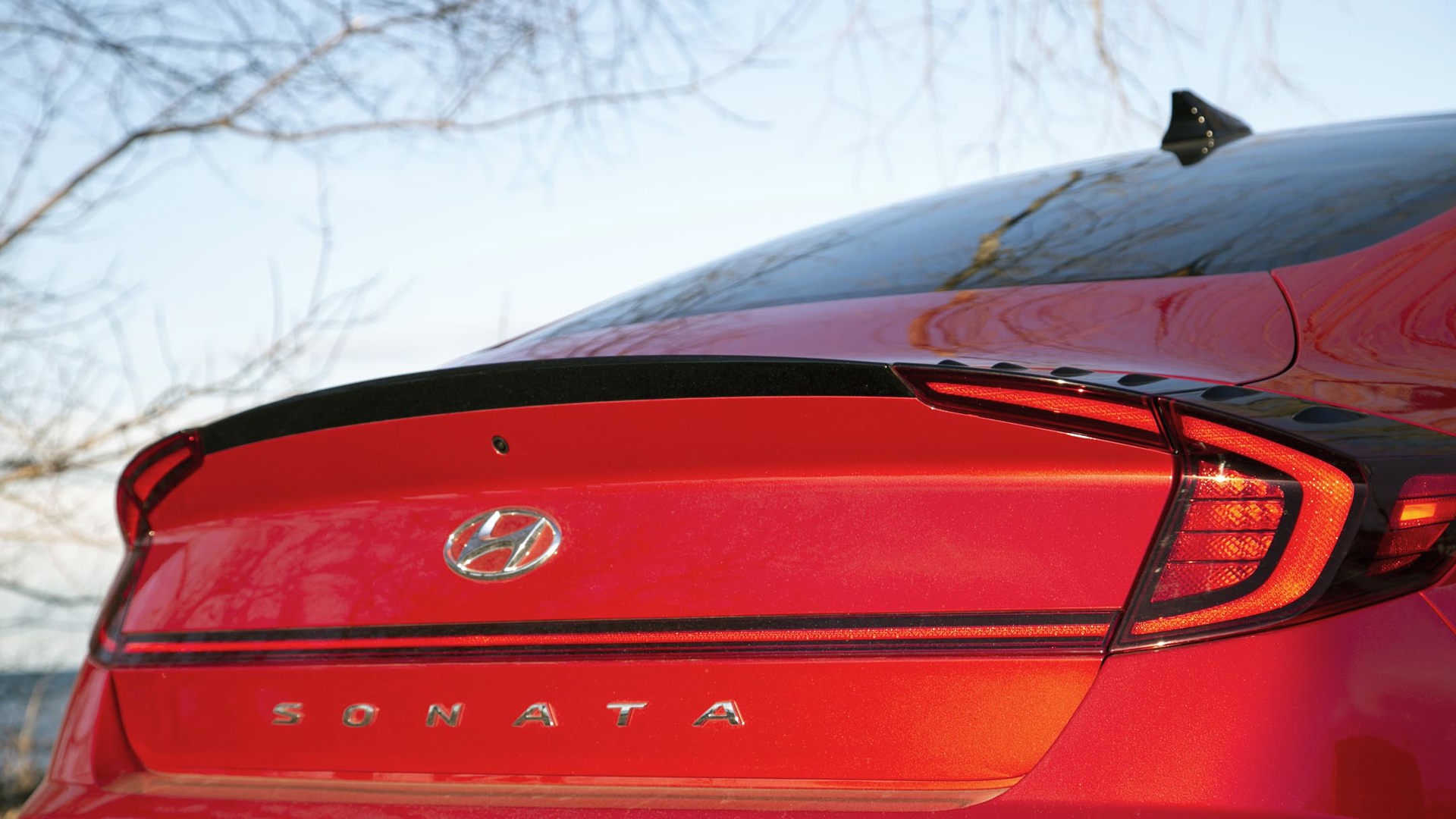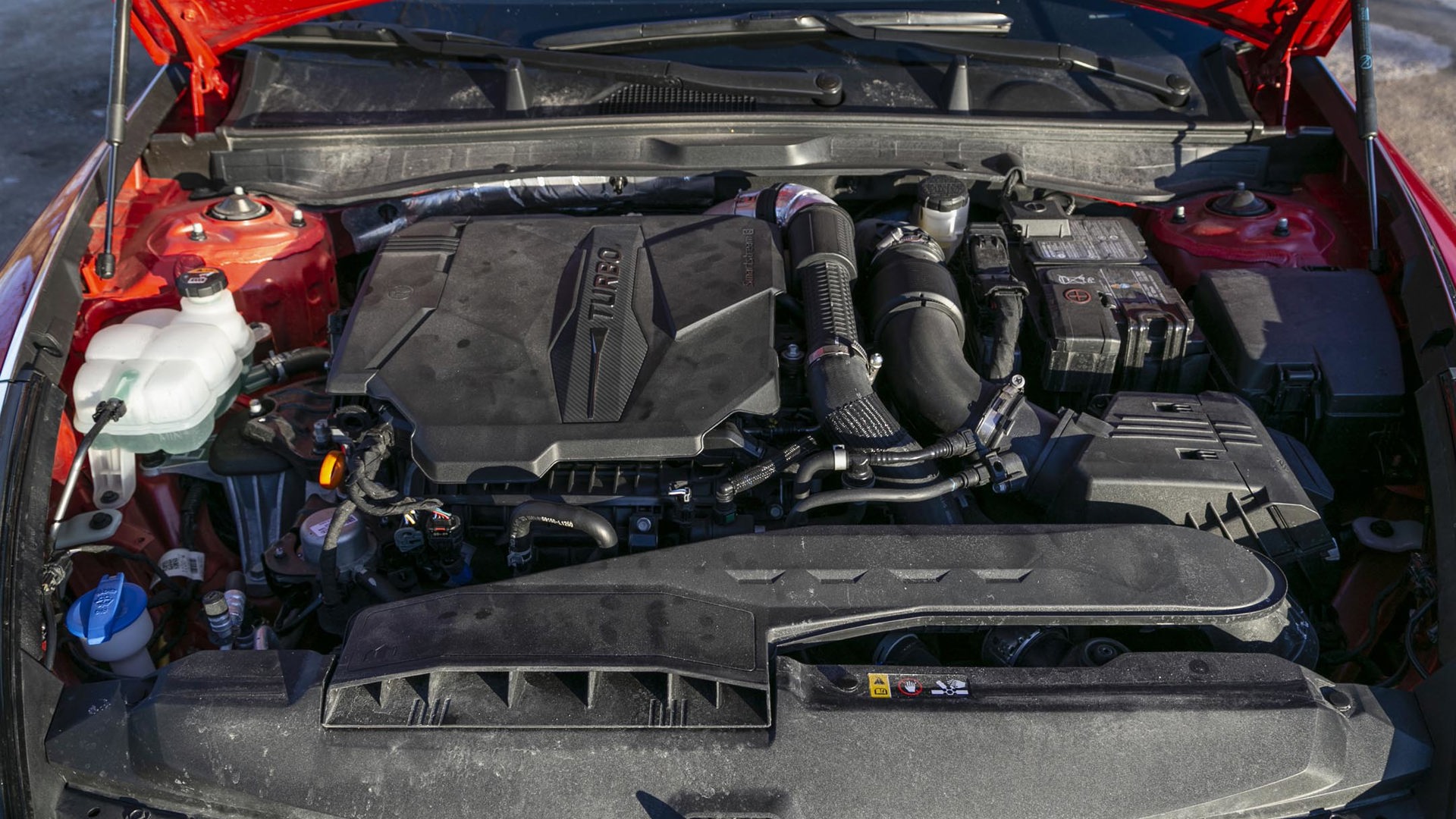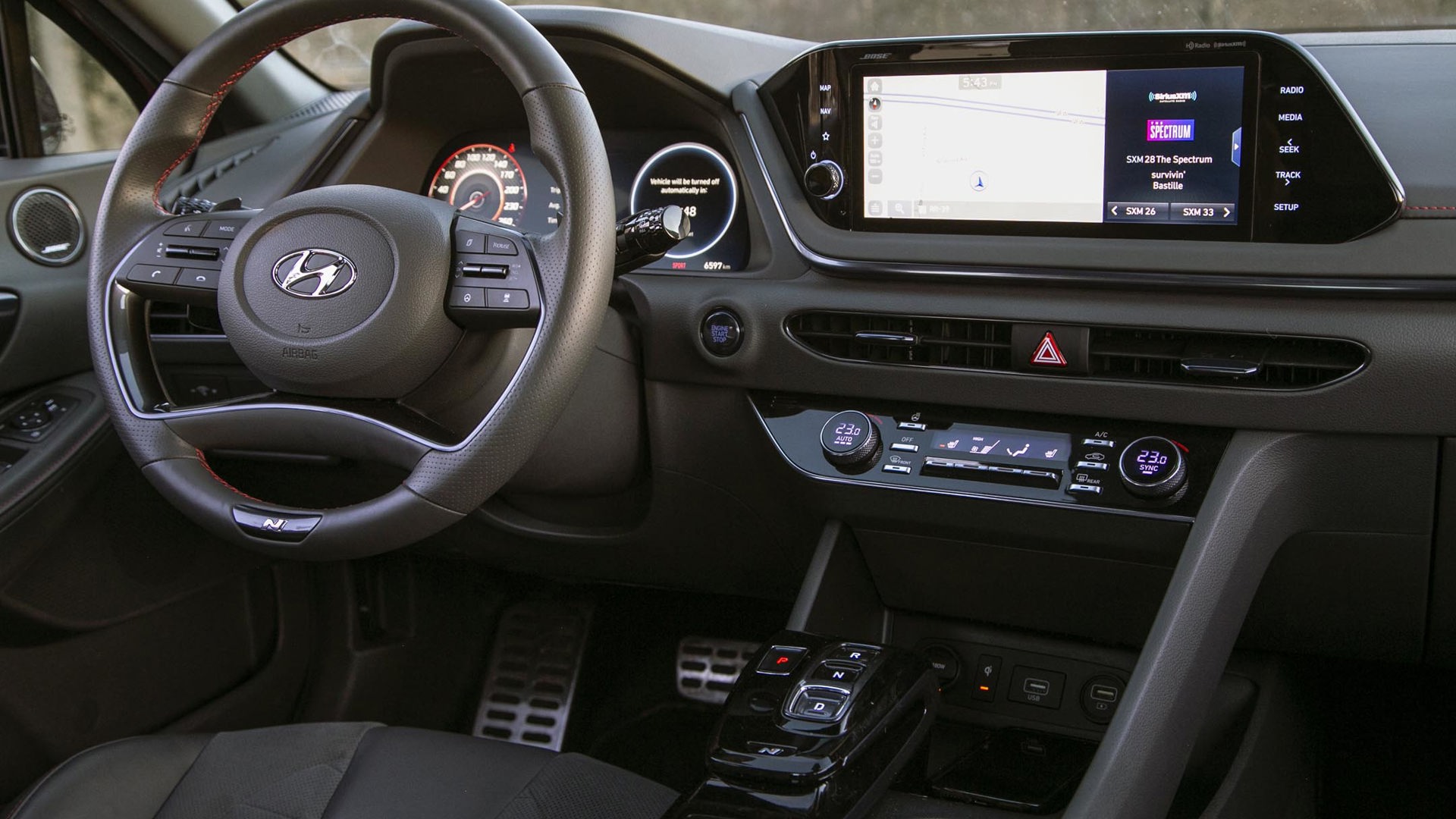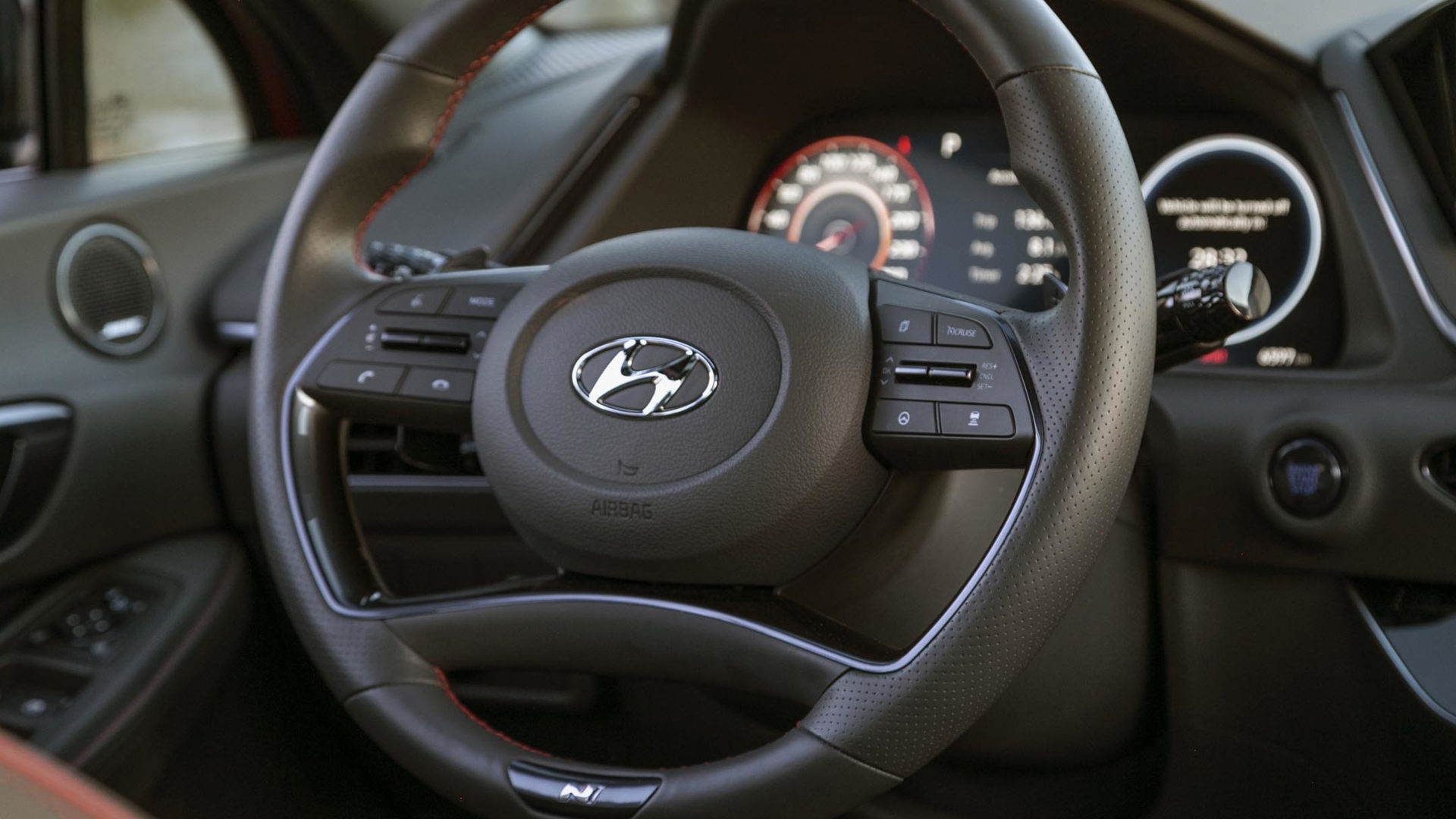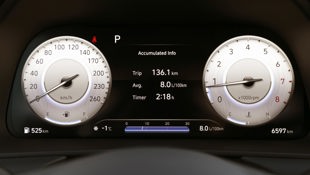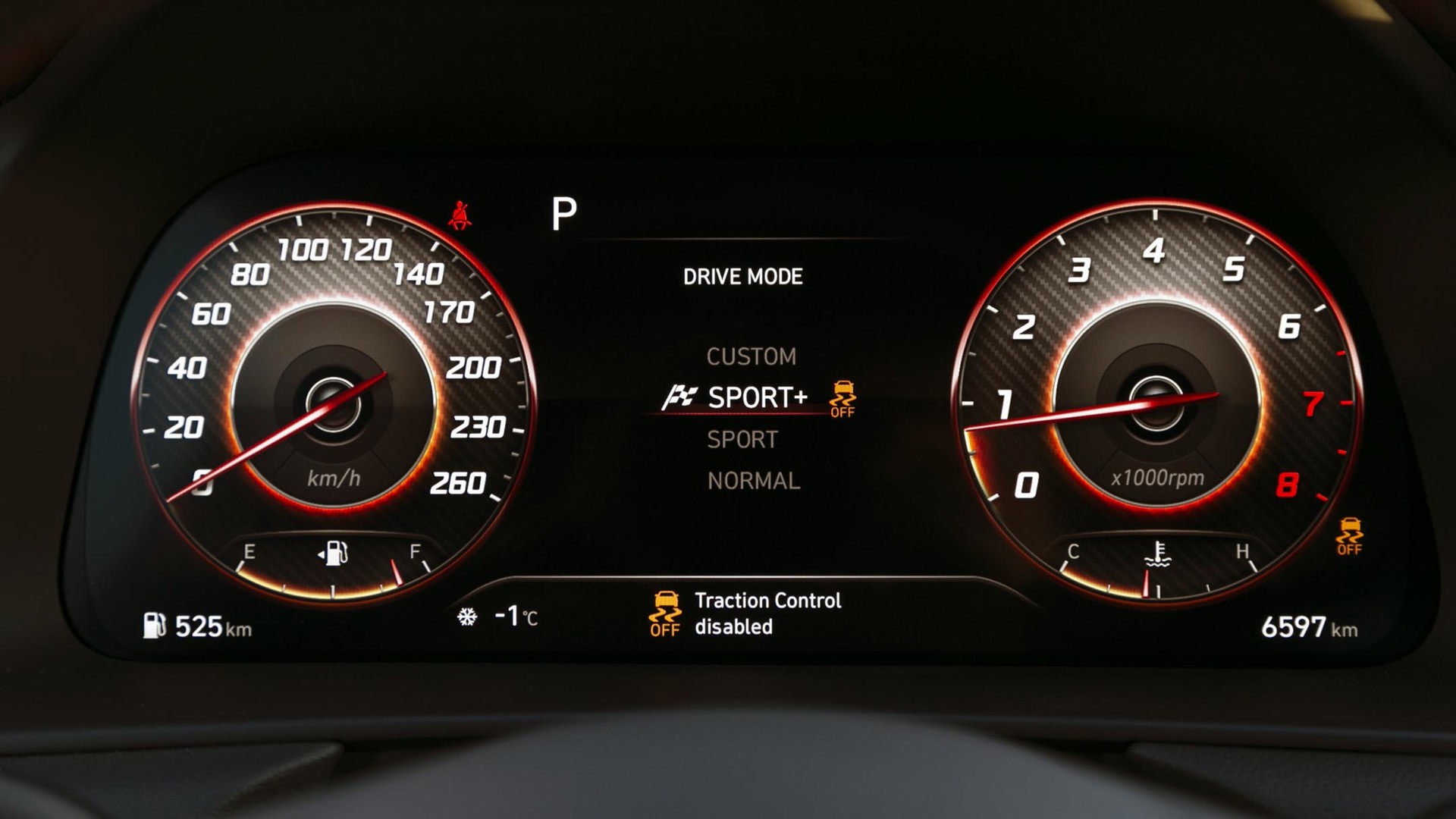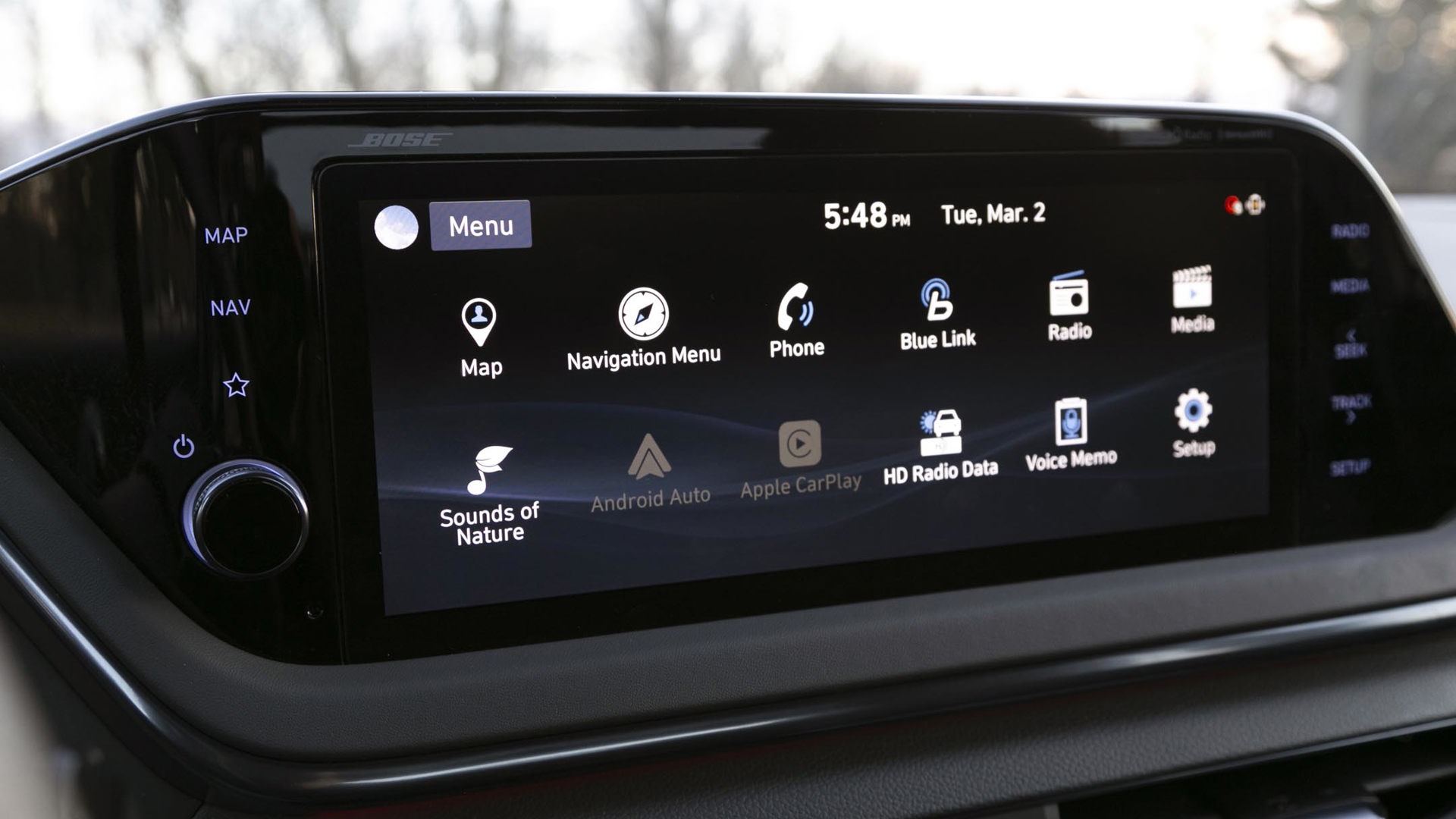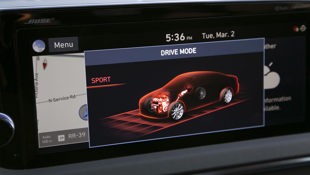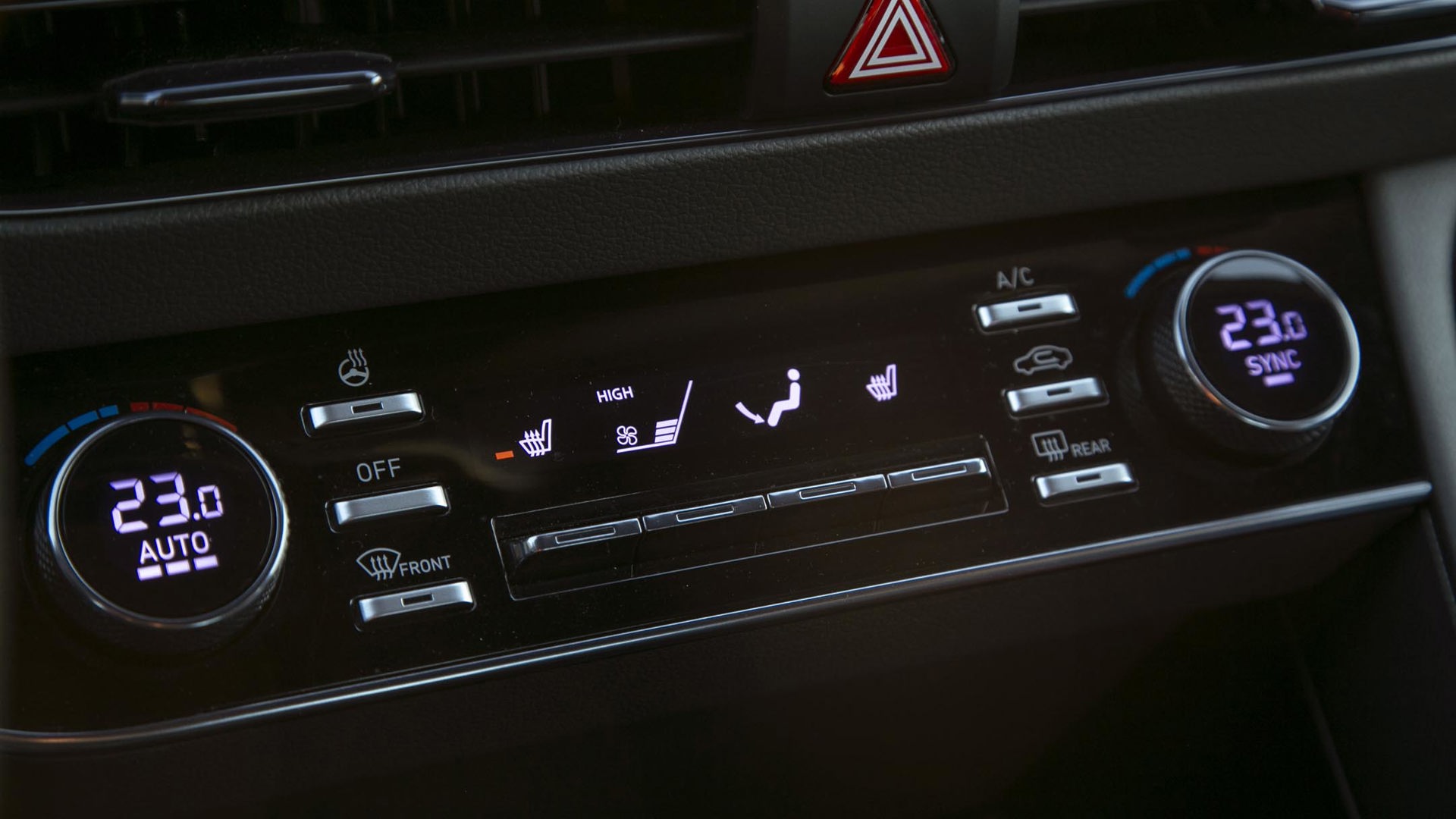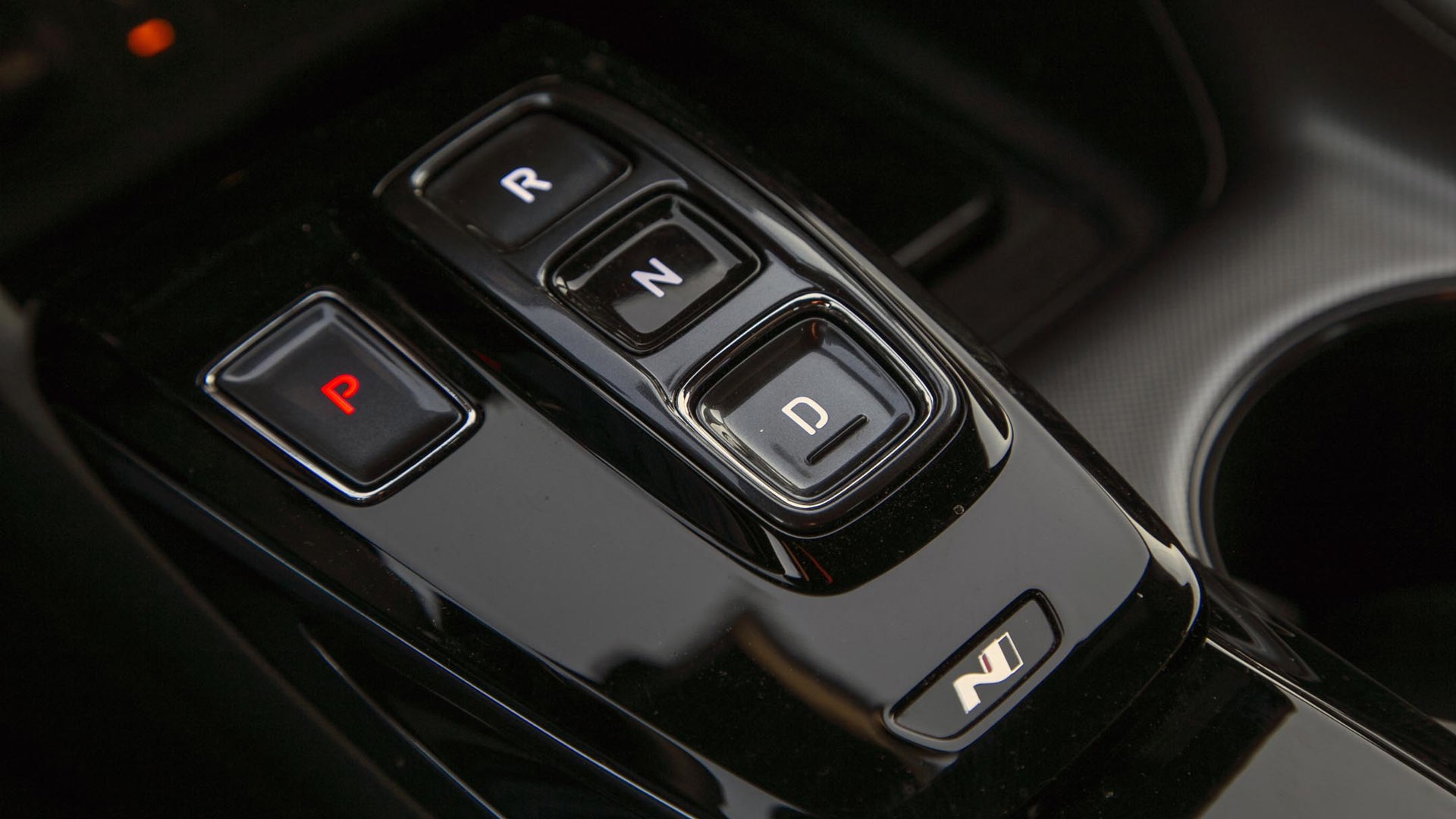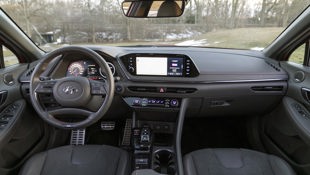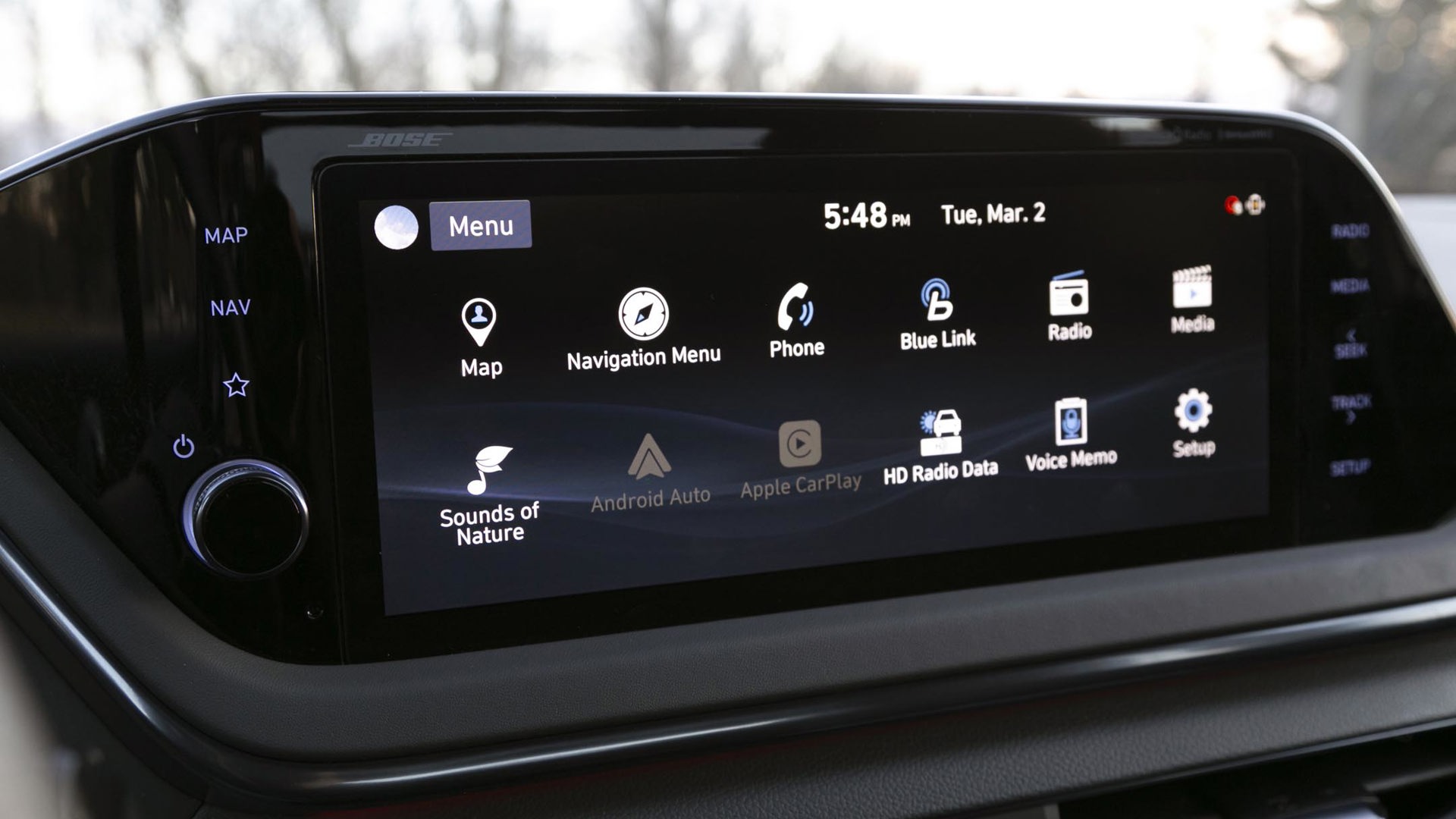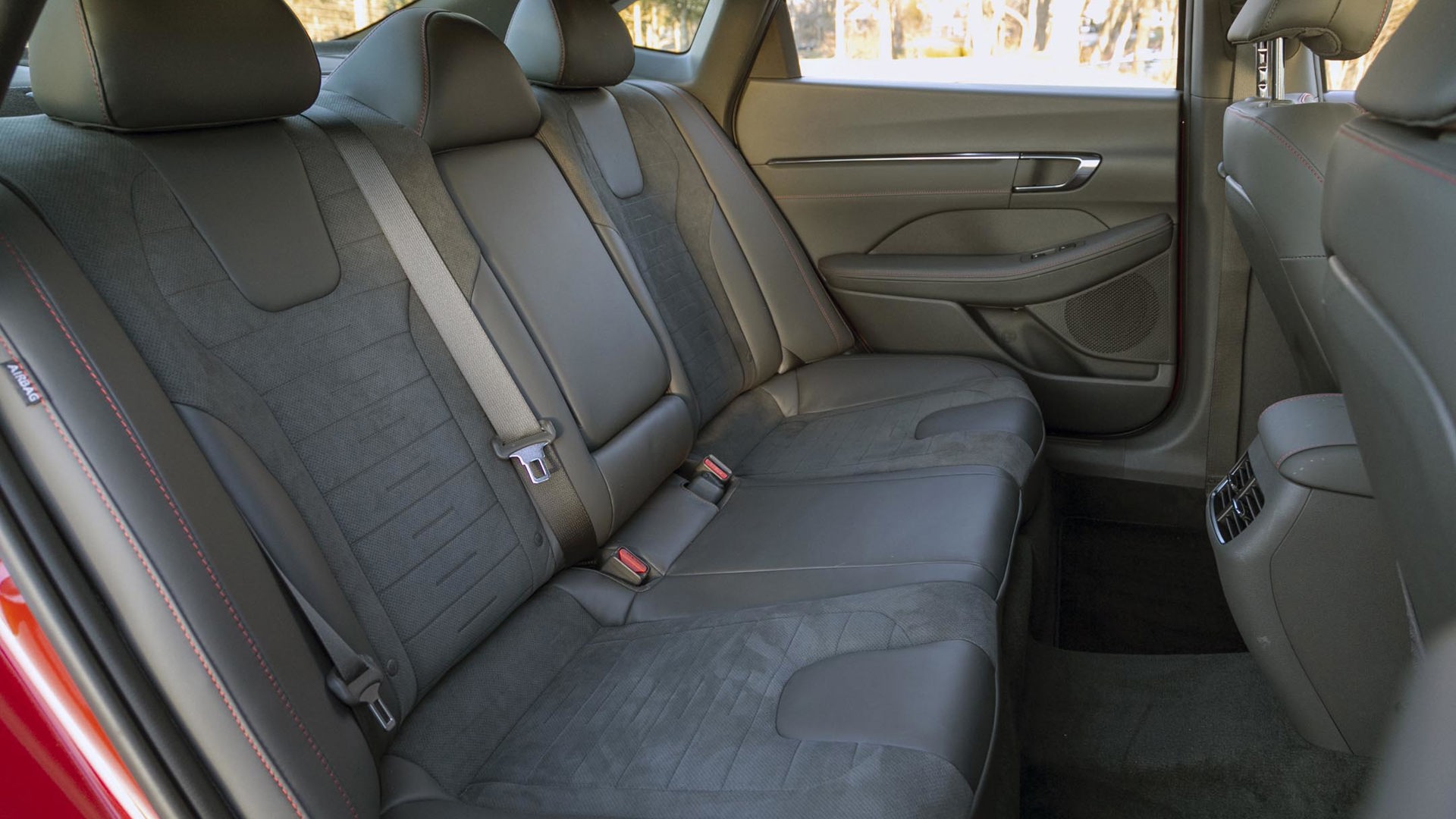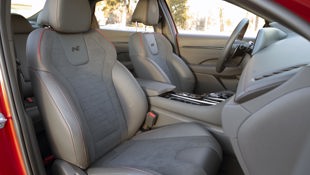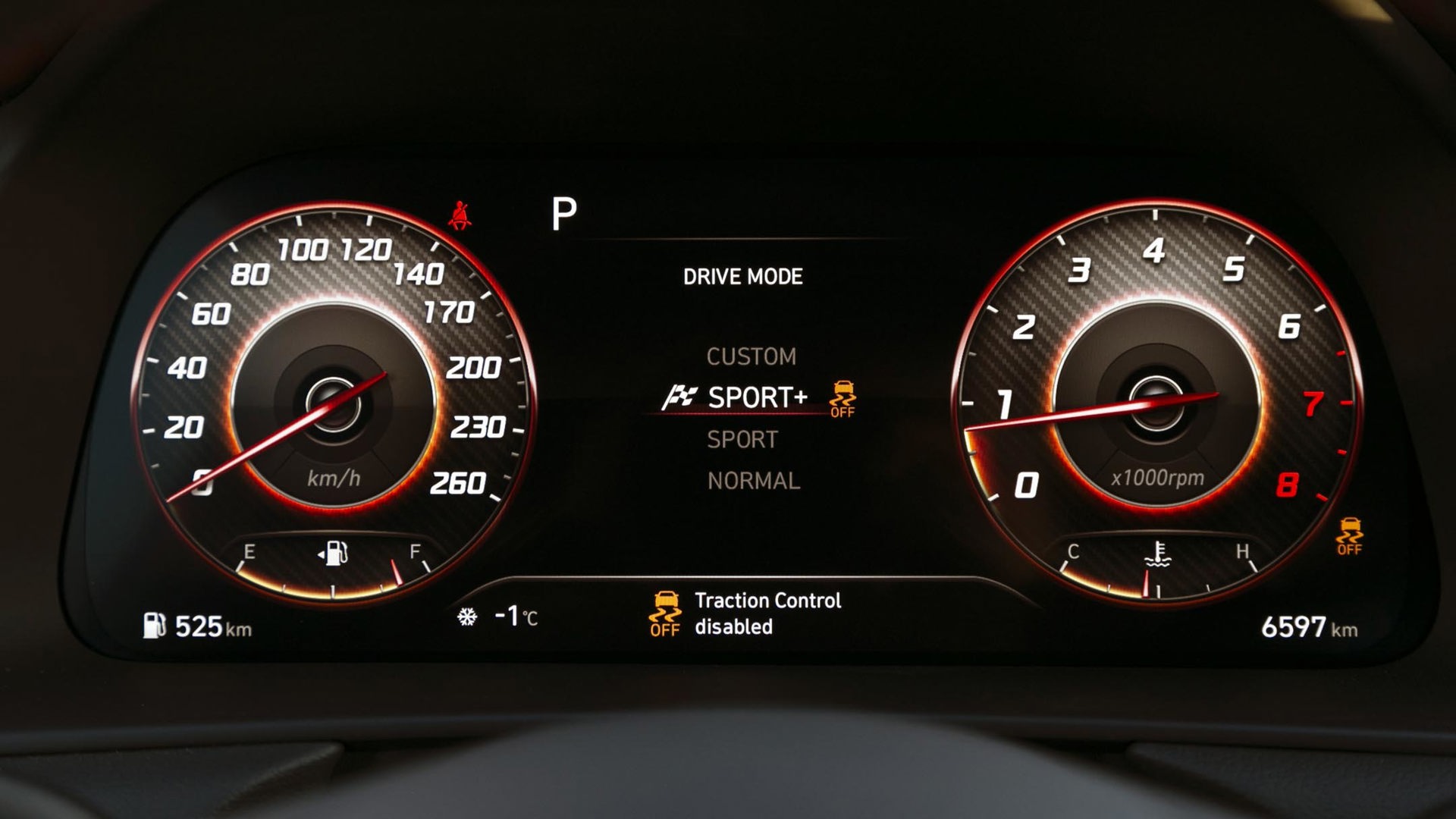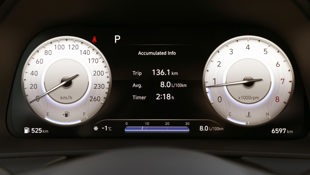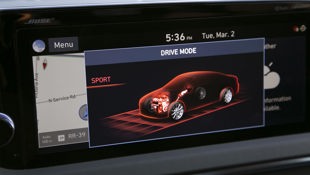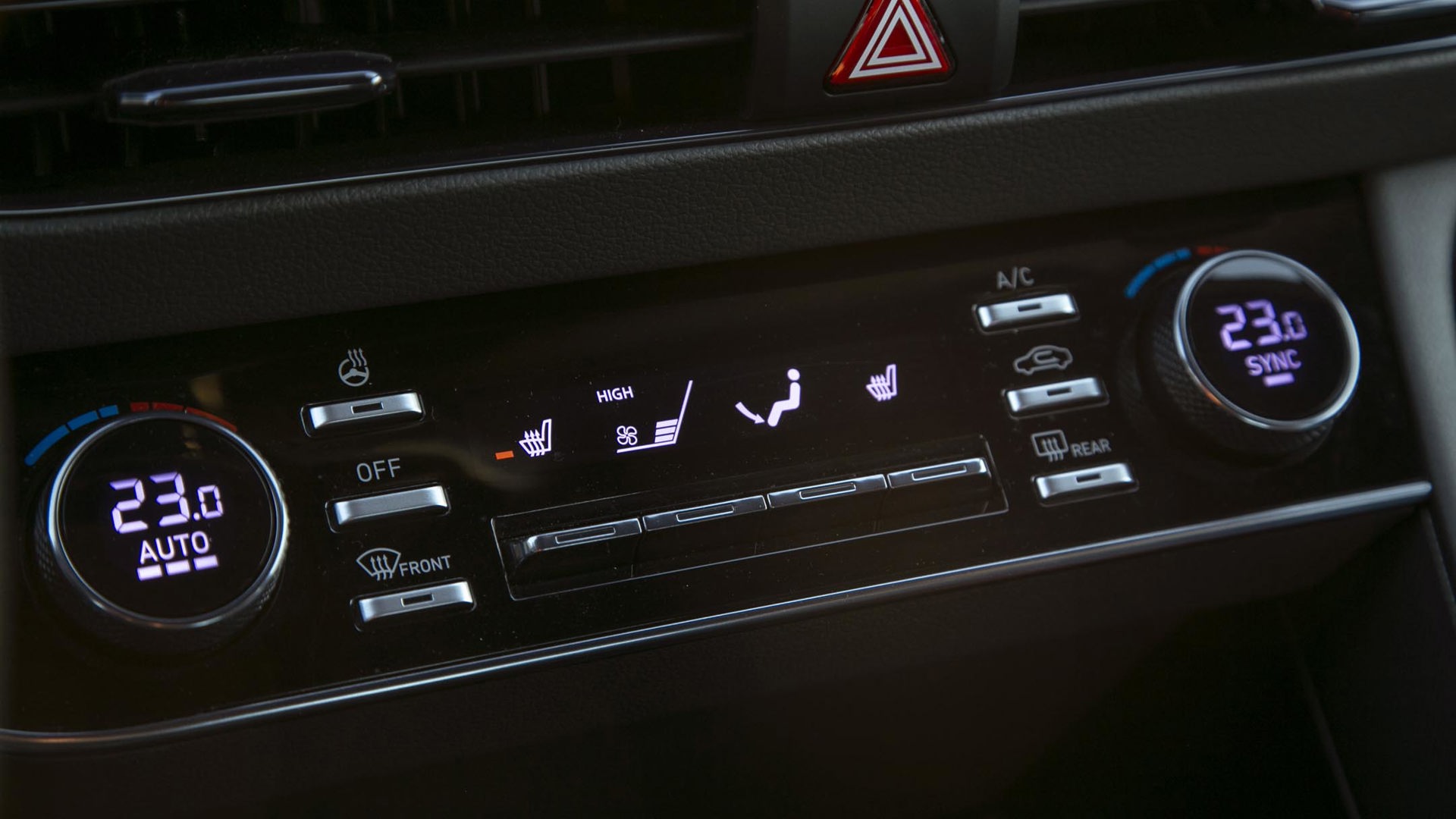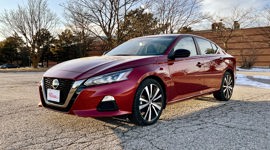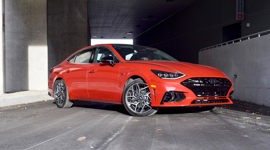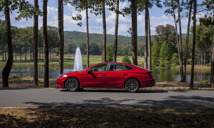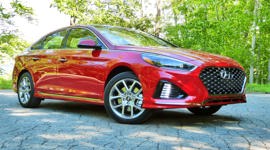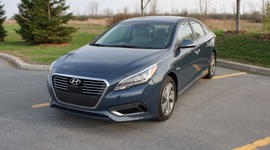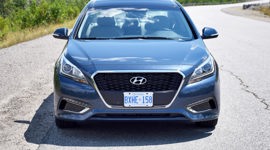 AutoTrader SCORE
AutoTrader SCORE
-
STYLING7/10
-
Safety9/10
-
PRACTICALITY7/10
-
USER-FRIENDLINESS9/10
-
FEATURES8/10
-
POWER8/10
-
COMFORT7/10
-
DRIVING FEEL8/10
-
FUEL ECONOMY7/10
-
VALUE7/10
When I first drove the redesigned Hyundai Sonata I came away largely impressed, griping only about its mediocre handling and relative lack of power.
A year after its launch the lineup has expanded, addressing both of those complaints in the process with the 2021 Hyundai Sonata N Line. A sportier Sonata isn’t going to reverse the trend of declining sedan sales, but it sure makes for a more compelling alternative for the family that fits.
Power: 8/10
Previously, the feistiest powerplant available in the Sonata was a 1.6L turbocharged four-cylinder that dispenses 180 hp and does an adequate job propelling the midsize sedan. This N Line, however, utilizes a larger 2.5L turbo four
that also sees duty as the base engine in a few new Genesis models. Its 290 hp is impressive, but it’s the 311 lb-ft of torque that really raises eyebrows.
While the V6 engines in the Toyota Camry and Dodge Charger offer up more power, the Sonata’s torque gives a more immediate kick in the backside and can help the N Line accelerate with gusto not usually associated with (*ahem*) family sedans. Even more out-of-character in the segment is the launch control setup that helps minimize standing-start acceleration times by managing the torque output to the level of grip available from the front tires.
The reality is that this torque output management system is forced to pull back hard on the reins until the tires can be trusted to hold firm on the pavement, which can take a while on anything but warm, dry tarmac or concrete. Once at speed, the N Line better utilizes its full arsenal of power making the Sonata ferociously quick at passing slower motorists, and legitimately fun for squirting through mind-numbing metro traffic.
Still, the Mazda6’s turbocharged four-cylinder is only a single torque count shy of the N Line but has a superior ability to get it to the ground, making it livelier at launch.
Driving Feel: 8/10
The N Line’s inability to properly put its power to the ground was worsened by the chilly weather and squishy winter tires my tester wore. But the tires can’t be used as an excuse for the Sonata’s significant torque steer. With a generous amount of throttle at low speeds, the driver needs to keep a firm grip on the steering wheel as the car tries to wrestle away control. It’s exciting in an old-school ’90s-car way, but we’ve seen how well Hyundai is capable of managing torque steer with its sensational Veloster N, suggesting there’s some room for improvement with the Sonata’s setup.
Out on the backroads, this Sonata N Line reinforces that Hyundai’s chassis engineers know how to tune a sporting car. Steering is quick and precise and the car stays flat and controllable when hustling through esses or on-ramps. Despite weighing roughly what any of its direct competitors do, the Sonata feels lighter on its feet and more willing to change directions, making it legitimately fun to drive – not a quality that’s typically associated with a front-wheel-drive midsize sedan.
The various drive modes that cycle through custom, normal, sport, and sport+ enable spicier steering and stability control settings, but the suspension isn’t adaptive, so even in its least aggressive mode the N Line is no less capable of even-keeled ride quality.
Adding to the sporty flavour of the N Line, Hyundai has utilized its eight-speed dual-clutch automatic transmission that snaps off lightning-quick gear changes. But when not driven with aggression it can be a bit clunky, and in stop-and-go traffic it shudders a bit. The N Line is fitted with larger brakes compared to other Sonata trims, and they offer strong stopping power and great initial bite, fitting for a performance car.
Fuel Economy: 7/10
In an age where hybrid sedans this size consume less fuel than the average lawnmower, it seems, the Sonata N Line’s official combined rate of 8.8 L/100 km may seem underwhelming. But for such a powerful, comfortable, and sporting car, it’s actually decent. During a week of mixed-condition driving (where the throttle was used gratuitously on a regular basis), my test car still showed an indicated average of 8.0 L/100 km. It’s rated to do 7.2 on the highway, but with careful driving, it should be easy to better that figure. Best of all, all the N Line’s performance is available with regular unleaded fuel.
Comfort: 7/10
A sport-tuned suspension like the one found underpinning the N Line usually suggests an unyielding ride. Add in the minimal sidewall of the low-profile 19-inch tires and it’d be safe to assume this performance Sonata will beat up its occupants on pot-holed and frost-heaved Canadian roads. Fortunately, that’s not the case, and while stiffer than more pedestrian Sonata models the N Line is far from punishing, rarely crashing over anything other than the biggest pavement wounds.
Add to that the N Line’s aggressively bolstered – but very comfortable – rear seats and it’s clear the folks at Hyundai remembered this is meant to be a sensible sedan as well as a fun one. Wind and road noises are well-suppressed, and while the engine offers a surprisingly gruff note, particularly at start-up, it is rarely intrusive to the cabin area.
Features: 8/10
The level of equipment offered in this no-option trim is impressive. While lacking a few of the Sonata Ultimate’s features (like cooled seats, blind-spot monitoring, and remote parking), the N Line still possesses plenty of luxury such as heated front and rear seats and steering wheel, a panoramic sunroof, and a wireless phone charging pad. There’s some cool technology standard, too, like a head-up display and Hyundai’s BlueLink phone app that helps an owner stay connected to the car, even when not in the same place. Plus, where Hyundai looks to be making other N Line models (the Kona, for instance) little more than appearance packages, the Sonata N Line benefits from its seriously upgraded drivetrain, too.
User Friendliness: 9/10
The Sonata’s interior is well conceived with smart cubbies for daily necessities, and a mostly sensible control layout. The steering wheel’s buttons are intuitive, and the dual-zone climate control couldn’t be simpler. And while the volume knob for the great sound system is appreciated, a tuning knob would also be welcome instead of the push-button tuner.
Still, that’s the only complaint to level against the Sonata’s excellent 10.25-inch touchscreen infotainment system. Its operation is as straightforward as they come, it responds immediately to inputs, and the ability to configure both Apple CarPlay (or Android Auto) and the radio tuner screen simultaneously is brilliant. It’s a shame Hyundai hasn’t enabled wireless CarPlay here yet, but surely it can’t be far off.
Overall, it’s an outstanding ergonomic effort save for the confounded push-button gear selector. Saving a bit of space compared to a traditional shifter stalk is nice and all, but having to stop, look, and think before stabbing at buttons while trying to complete a three-point turn on a busy two-lane road is a needlessly hectic procedure. Worse still, on one hurried occasion, I had believed I had sufficiently depressed the park button only to find out as the car moved slightly, that it was still in drive.
Safety: 9/10
The 2021 Sonata receives a five-star rating from the United States National Highway Traffic Safety Administration (NHTSA) and a Top Pick rating from the Insurance Institute for Highway Safety (IIHS). Kudos to Hyundai for not making its active safety functions an added-cost option, instead including items like forward collision avoidance, lane-keeping assistance, blind-spot monitoring, and even driver attentiveness monitor standard equipment on this N Line.
Styling: 7/10
While the Sonata’s distinctive styling requires a bit of an acquired taste, particularly from the front, the N Line’s deeper lip spoiler helps offset some of the lower trim’s catfish visage. Plus, the side skirts and 19-inch wheels add a more purposeful profile than other trims. The way the front LEDs fade into the hood remains a unique and clever design detail for the Sonata, and the bright red paint of my tester looked deep and beautifully applied.
Inside, the N Line’s interior is offered only in one flavour: grey. While the leather-and-faux-suede seats are finished with bright red stitching and piping, the abundant grey plastic somewhat diminished the interior to my eye. The faux suede on the seats help grip occupants, but they also collect lint and fuzz, making them look a bit grungy.
Practicality: 7/10
Dimensionally, the Sonata N Line measures up well against its key competitors, though it does lack rear-seat legroom compared to the Camry, Honda Accord, and Mazda6. However, there is still ample space for two passengers back there, with a third being able to fit snugly between them when necessary. Front-seat space is great with its headroom bettering its peers.
The Sonata’s trunk space, at 453 L, is better than most, but still notably smaller than the Accord’s, and although the rear seat does split and fold flat to expand that space, part of what has caused midsize sedans like this to fall out of fashion is the relative lack of cargo space versus a small crossover. Similarly, all-wheel drive has become another seemingly must-have feature, and it’s not offered with any Sonata – though it managed this winter test just fine.
Value: 7/10
At $39,824 before tax but with freight fees, the Sonata N-Line is a good value. The level of equipment and performance offered here is impressive at this price point, especially considering the N Line’s mechanical twin – the Kia K5 GT – inexplicably costs about $2,000 more. But, the 2.0L turbo-powered Accord and Mazda6 with its turbo engine both ring the till lower than the N Line, and the sporty Camry TRD is a full $2,000 less.
The Verdict
Sales of midsize mainstream sedans have fallen off a cliff, and yet several manufacturers offer sporty variations of their models for what must surely be a niche market. Enthusiasts should applaud carmakers for offerings like the 2021 Hyundai Sonata N Line that can work well as a daily driven family car, but also has the performance capability to put a smile on the driver’s face when facing some twisty back roads.
The Sonata N Line is a well-executed offering and a viable consideration for those shopping the other sporty offerings in the segment, but without all-wheel drive, it simply falls short of its true potential.
| Engine Displacement | 2.5L |
|---|---|
| Engine Cylinders | Turbo I4 |
| Peak Horsepower | 290 hp @ 5,800 rpm |
| Peak Torque | 311 lb-ft @ 1,650 rpm |
| Fuel Economy | 10.1 / 7.2 / 8.8 L/100 km cty/hwy/cmb |
| Cargo Space | 453 L |
| Model Tested | 2021 Hyundai Sonata N Line |
| Base Price | $37,999 |
| A/C Tax | $100 |
| Destination Fee | $1,825 |
| Price as Tested | $39,924 |
|
Optional Equipment
None
|
|

